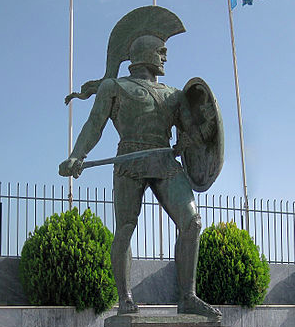
 |
|---|
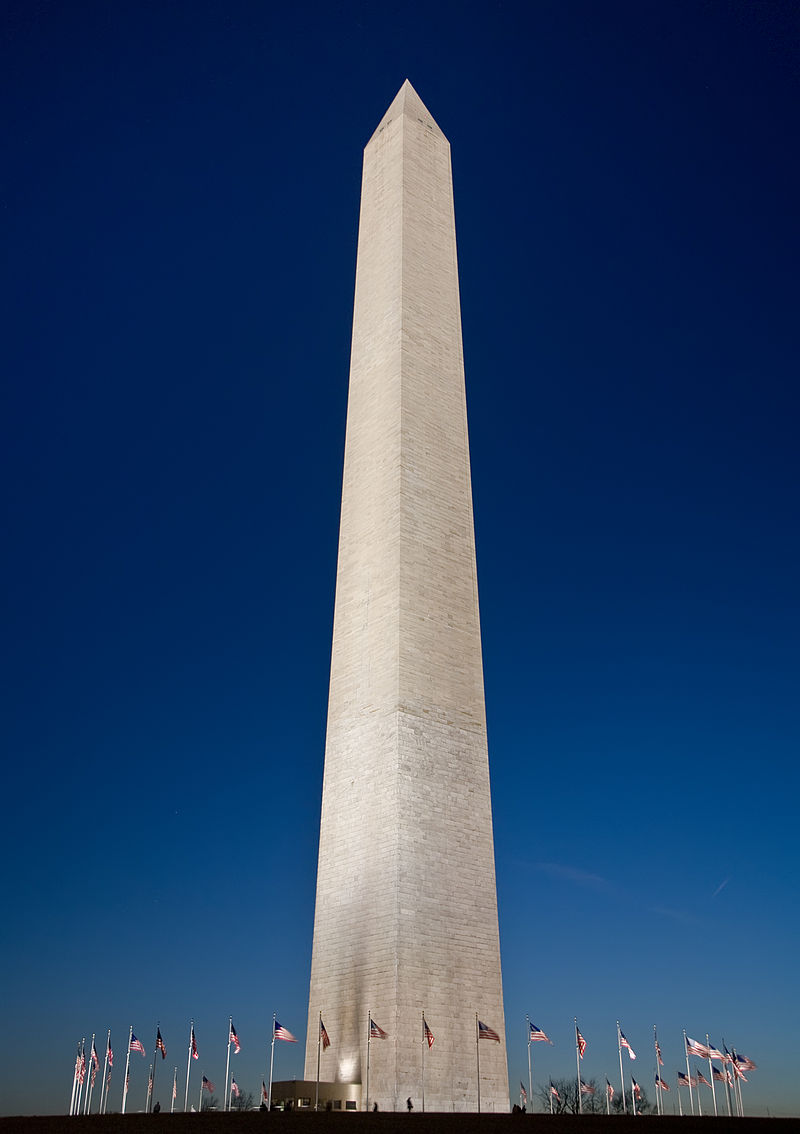 |
|---|
The American Revolutionary War concluded with the signing of the Treaty of Paris on September 3, 1783. Washington then disbanded his army and, on November 2, gave an eloquent farewell address to his soldiers. On November 25, the British evacuated New York City, and Washington and the governor took possession. At Fraunces Tavern on December 4, Washington formally bade his officers farewell and on December 23, 1783, he resigned his commission as commander-in-chief, saying "I consider it an indispensable duty to close this last solemn act of my official life, by commending the interests of our dearest country to the protection of Almighty God, and those who have the superintendence of them, to his holy keeping." Historian Gordon Wood concludes that the greatest act in his life was his resignation as commander of the armies-an act that stunned aristocratic Europe. King George III called Washington "the greatest character of the age" because of this.
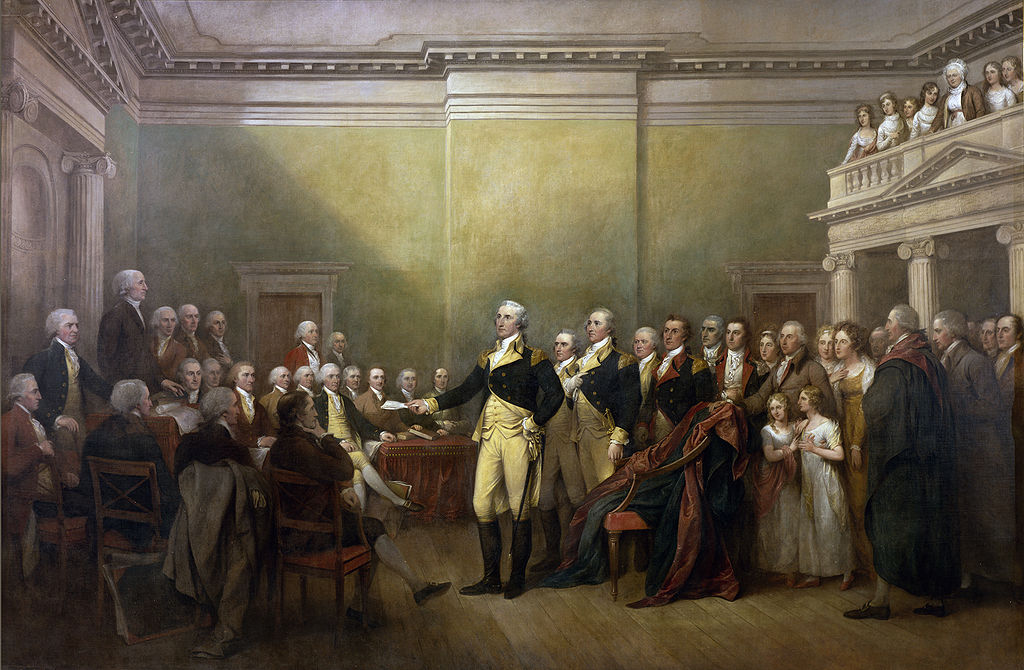 |
|---|
Washington's retirement to personal business at Mount Vernon was short-lived. After much reluctance, he was persuaded to attend the Constitutional Convention in Philadelphia during the summer of 1787 as a delegate from Virginia, where he was elected in unanimity as president of the Convention. He held considerable criticism of the Articles of Confederation of the thirteen colonies, for the weak central government it established, referring to the Articles as no more than "a rope of sand" to support the new nation. His participation in the debates was minor, although he casted his vote when called upon; his prestige facilitated the collegiality and productivity of the delegates. After a couple of months into the task, Washington told Alexander Hamilton, "I almost despair of seeing a favorable issue to the proceedings of our convention and do therefore repent having had any agency in the business." In the end agreements were hatched however, and Washington thought the achievement monumental.
The Electoral College unanimously elected Washington as the first president in 1789, and again in 1792. He remains the only president to receive the totality of electoral votes. Washington ensured titles and trappings were suitably republican and never emulated European royal courts. To that end, he preferred the title "Mr. President" to the more majestic names proposed by the Senate.
Washington's Farewell Address (issued as a public letter in 1796) was one of the most influential statements of republicanism. Drafted primarily by Washington himself, with help from Hamilton, it gives advice on the necessity and importance of national union, the value of the Constitution and the rule of law, the evils of political parties and the proper virtues of a republican people. He referred to morality as "a necessary spring of popular government", and said, "Whatever may be conceded to the influence of refined education on minds of peculiar structure, reason and experience both forbid us to expect that national morality can prevail in exclusion of religious principle."
After retiring from the presidency in March 1797, Washington returned to Mount Vernon. He devoted much time to his plantations and other business interests, including his distillery which produced its first batch of spirits in February 1797.
By 1798, relations with France had deteriorated to the point that war seemed imminent, and on July 4, 1798, President Adams offered Washington a commission as lieutenant general and Commander-in-chief of the armies raised or to be raised for service in a prospective war. He accepted, and served as the senior officer of the United States Army from July 13, 1798 until his death seventeen months later. He participated in the planning for a Provisional Army to meet any emergency that might arise, but avoided involvement in details as much as possible; he delegated most of the work, including leadership of the army, to Hamilton.
During the Revolutionary ad Early Republican periods of American history, many commentators compared Washington with the Roman aristocrat and statesman Cincinnatus. The comparison arose as Washington, like Cincinnatus, remained in command of the Continental Army only until the British had been defeated. Thereafter, instead of seeking great political power, he returned as quickly as possible to cultivating his lands. Lord Byron's Ode to Napoleon also lionized Washington as "the Cincinnatus of the West"
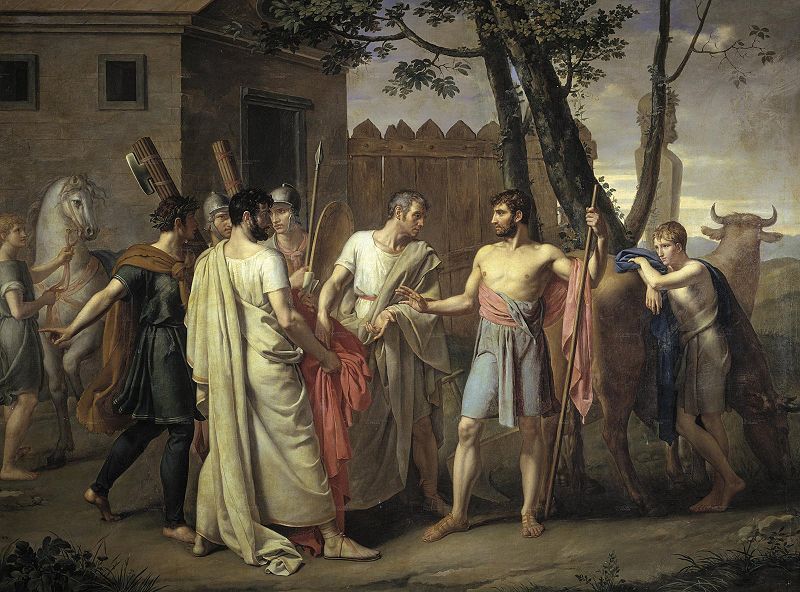 |
|---|
In Ancient Rome, 458 BCE, Cinncinnatus was tending his farm when a group of senators arrived to inform him that the senate had appointed him Dictator of Rome, and that an invading army was on the verge of conquering Rome. Cinncinnatus marshalled an army and vanquished the invaders.
With the war concluded, Cincinnatus disbanded the army, resigned the dictatorship and returned to his farm, a mere 15 days after he had been appointed dictator.
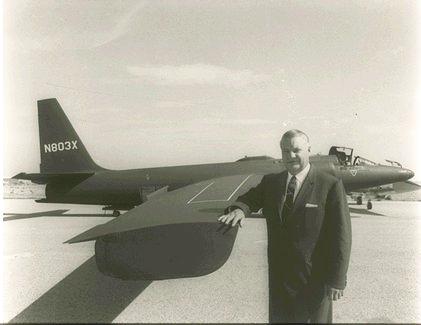 |
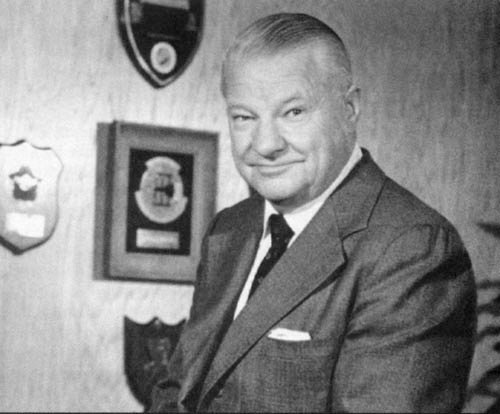 |
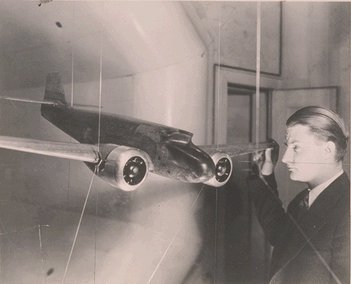 |
|---|---|---|
Aircraft designed by Kelly Johnson include:
 |
 |
 |
|---|---|---|
 |
 |
 |
|---|---|---|
 |
|---|
Hall Hibbard once said: "That damned Swede can actually see air."
 |  |
 |
|
|---|---|---|---|
LeMay received a degree in civil engineering from Ohio State University.
Robert McNamara described LeMay's character, in a discussion of a report into high abort rates in bomber missions during World War II:
"One of the commanders was Curtis LeMay, a Colonel in command of a B-24 group. He was the finest combat commander of any service I came across in war. He said, 'I will be in the lead plane on every mission. Any plane that takes off will go over the target, or the crew will be court-martialed.' The abort rate dropped overnight. Now that's the kind of commander he was."
When his crews were not flying missions, they were subjected to relentless training, as he believed that training was the key to saving their lives. Throughout his career, LeMay was widely and fondly known among his troops as "Old Iron Pants" and the "Big Cigar". LeMay once said: "Flying fighters is fun. Flying bombers is important."
In 1951, Gen. Curtis Lemay appointed Emilio "Mel" Bruno, his Judo teacher and a former national American Athletic Union Wrestling champion and fifth degree black belt in Judo, to direct a command-wide Judo and combative measures program.
Curtis LeMay is credited with designing and implementing an effective bombing campaign in the Pacific theater of World War II, including a crippling minelaying campaign in Japan's internal waterways. The war was effectively over long before the nuclear strike because of the success of the naval blockade.
 |
 |
 |
|---|---|---|
LeMay piloted one of three specially modified B-29s flying from Japan to the U.S. in September 1945, in the process breaking several aviation records at that date, including the greatest USAAF takeoff weight, the longest USAAF non-stop flight, and the first ever non-stop Japan-Chicago flight. One of the pilots was of higher rank: Lieutenant General Barney M. Giles. The other two aircraft used up more fuel than LeMay's in fighting headwinds, and they could not fly to Washington, D.C., the original goal. Their pilots decided to land in Chicago to refuel. LeMay's aircraft had sufficient fuel to reach Washington, but he was directed by the War Department to join the others by refueling at Chicago. The order was ostensibly given because of borderline weather conditions in Washington, but according to First Lieutenant Ivan J. Potts who was on board, the order came because LeMay had one fewer general's stars and should not be seen to outperform his superior.
In 1947, he returned to Europe as commander of USAF Europe, heading operations for the Berlin Airlift in 1948 in the face of a blockade by the Soviet Union and its satellite states that threatened to starve the civilian population of the Western occupation zones of Berlin. Under LeMay's direction, Douglas C-54 Skymasters that could each carry 10 tons of cargo began supplying the city on July 1. By the fall, the airlift was bringing in an average of 5,000 tons of supplies a day with 500 daily flights. The airlift continued for 11 months (213000 flights) that brought in 1.7 million tons of food and fuel to Berlin. Faced with the failure of its blockade, the Soviet Union relented and reopened land corridors to the West. Though LeMay is sometimes publicly credited with the success of the Berlin Airlift, it was, in fact, instigated by General Lucius D. Clay when General Clay called LeMay about the problem. LeMay initially started flying supplies into Berlin, but then decided that it was a job for a logistics expert and he found that person in Lt. General William H. Tunner, who took over the operational end of the Berlin Airlift.
In 1948, he returned to the U.S. to head the Strategic Air Command (SAC). When LeMay took over command of SAC, it consisted of little more than a few understaffed B-29 bombardment groups left over from World War II. Less than half of the available aircraft were operational, and the crews were undertrained. Base and aircraft security standards were minimal. Upon inspecting a SAC hangar full of US nuclear strategic bombers, LeMay found a single Air Force sentry on duty, unarmed. After ordering a mock bombing exercise on Dayton, Ohio, LeMay was shocked to learn that most of the strategic bombers assigned to the mission missed their targets by one mile or more. "We didn't have one crew, not one crew, in the entire command who could do a professional job" noted LeMay.
A meeting in November, 1948 with Air Force Chief of Staff, Hoyt Vandenberg, found the two men agreeing the primary mission of SAC should be the capability of delivering 80% of the nation's atomic bombs in one mission. Towards this aim, LeMay delivered the first SAC Emergency War Plan in March 1949 which called for dropping 133 atomic bombs on 70 cities in the USSR within 30 days. Air power strategists called this type of pre-emptive strike, "killing a nation." However, the Harmon committee, released their unanimous report two months later stating such an attack would not end a war with the Soviets and their industry would quickly recover. This committee had been specifically created by the Joint Chiefs of Staff to study the effects of a massive nuclear strike against the Soviet Union. Nevertheless, within weeks, an ad hoc Joint Chiefs committee recommended tripling America's nuclear arsenal, and Chief of Staff Vandenberg called for enough bombs to attack 220 targets, up from the previous 70.
Upon receiving his fourth star in 1951 at age 44, LeMay became the youngest four-star general in American history since Ulysses S. Grant and was the youngest four-star general in modern history as well as the longest serving in that rank. In 1956 and 1957 LeMay implemented tests of 24-hour bomber and tanker alerts, keeping some bomber forces ready at all times. LeMay headed SAC until 1957, overseeing its transformation into a modern, efficient, all-jet force. LeMay's tenure was the longest over an American military command in nearly 100 years.
General LeMay was instrumental in SAC's acquisition of a large fleet of new strategic bombers, establishment of a vast aerial refueling system, the formation of many new units and bases, development of a strategic ballistic missile force, and establishment of a strict command and control system with an unprecedented readiness capability. All of this was protected by a greatly enhanced and modernized security force, the Strategic Air Command Elite Guard. LeMay insisted on rigorous training and very high standards of performance for all SAC personnel, be they officers, enlisted men, aircrews, mechanics, or administrative staff, and reportedly commented, "I have neither the time nor the inclination to differentiate between the incompetent and the merely unfortunate."
A famous legend often used by SAC flight crews to illustrate LeMay's command style concerned his famous ever-present cigar. LeMay once took the co-pilot's seat of a SAC bomber to observe the mission, complete with lit cigar. When asked by the pilot to put the cigar out, LeMay demanded to know why. When the pilot explained that fumes inside the fuselage could ignite the airplane, LeMay reportedly growled, "It wouldn't dare."
Despite his uncompromising attitude regarding performance of duty, LeMay was also known for his concern for the physical well-being and comfort of his men. LeMay found ways to encourage morale, individual performance, and the reenlistment rate through a number of means: encouraging off-duty group recreational activities, instituting spot promotions based on performance, and authorizing special uniforms, training, equipment, and allowances for ground personnel as well as flight crews.
On LeMay's departure, SAC was composed of 224,000 airmen, close to 2,000 heavy bombers, and nearly 800 tanker aircraft.
LeMay was appointed Vice Chief of Staff of the United States Air Force in July 1957, serving until 1961. He advocated the introduction of satellite technology and pushed for the development of the latest electronic warfare techniques.
The memorandum from LeMay, Chief of Staff, USAF, to the Joint Chiefs of Staff, January 4, 1964, illustrates LeMay's reasons for keeping bomber forces alongside ballistic missiles: "It is important to recognize, however, that ballistic missile forces represent both the U.S. and Soviet potential for strategic nuclear warfare at the highest, most indiscriminate level, and at a level least susceptible to control. The employment of these weapons in lower level conflict would be likely to escalate the situation, uncontrollably, to an intensity which could be vastly disproportionate to the original aggravation. The use of ICBMs and SLBMs is not, therefore, a rational or credible response to provocations which, although serious, are still less than an immediate threat to national survival. For this reason, among others, I consider that the national security will continue to require the flexibility, responsiveness, and discrimination of manned strategic weapon systems throughout the range of cold, limited, and general war."
LeMay was a Heathkit customer and active amateur radio operator. He was famous for being on the air on amateur bands while flying on board SAC bombers. LeMay became aware that the new single sideband (SSB) technology offered a big advantage over amplitude modulation (AM) for SAC aircraft operating long distances from their bases. In conjunction with Heath engineers and Art Collins, he established SSB as the radio standard for SAC bombers in 1957.
LeMay was also a sports car owner and enthusiast (he owned an Allard J2). LeMay loaned out facilities of SAC bases for use by the Sports Car Club of America. He was awarded the Woolf Barnato Award, SCCA's highest award, for contributions to the Club, in 1954. In November 2006, it was announced that General LeMay would be one of the inductees into the SCCA Hall of Fame in 2007.
The dumbasses: The Press
LeMay enthusiastically supported racial integration in the U.S. military publicly and privately. In 1968 LeMay was the running mate to George Wallace in the presidential election, and he was dismayed to find himself attacked in the press as a racial segregationist because he was running with Wallace; he had never considered himself a bigot.
The quotation "we should bomb them back to the stone age" was falsely attributed to LeMay by the press. In an interview LeMay said: "I never said we should bomb them back to the Stone Age. I said we had the capability to do it."
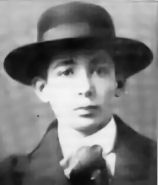 |
|---|
Leo Szilard was a Hungarian-American physicist and inventor. He conceived the nuclear chain reaction in 1933, patented the idea of a nuclear reactor with Enrico Fermi, and in late 1939 wrote the letter for Albert Einstein's signature that resulted in the Manhattan Project that built the atomic bomb.
From 1908 to 1916 he attended Realiskola high school in his home town. Showing an early interest in physics and a proficiency in mathematics, in 1916 he won the Eotvos Prize, a national prize for mathematics. In Hungary this is a big deal, where mathematics is as prestigious as wrestling is in the rural Midwest. Other Hungarian physicists from this age include von Neumann, Erdos, Teller, Wigner, von Karman, Eotvos, and Lanczos. Such was the might of Hungarian physicists that it was speculated they were aliens.
 |
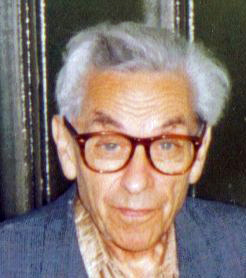 |
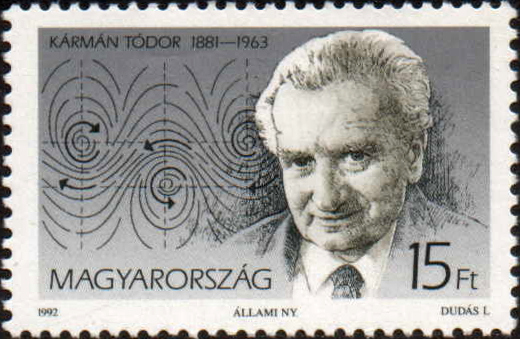 |
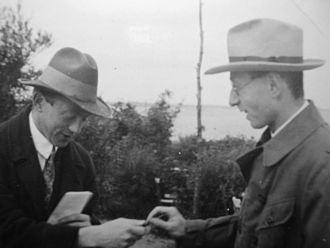 |
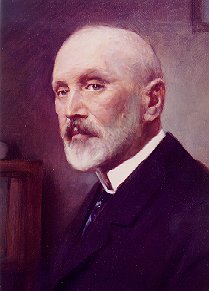 |
.jpg) |
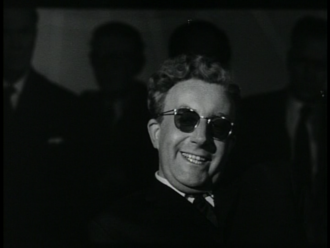 |
|---|---|---|---|---|---|---|
Szilard attended Friedrich Wilhelm University, where he attended lectures given by Albert Einstein, Max Planck, Walter Nernst, James Franck and Max von Laue. He also met fellow Hungarian students Eugene Wigner, John von Neumann and Dennis Gabor. His doctoral dissertation on thermodynamics (On The Manifestation of Thermodynamic Fluctuations), praised by Einstein, won top honors in 1922. It involved a long-standing puzzle in the philosophy of thermal and statistical physics known as Maxwell's demon, a thought experiment originated by the physicist James Clerk Maxwell. The problem was thought to be insoluble, but in tackling it Szilard recognized the connection between thermodynamics and Information theory.
In September 12, 1933, Szilard read an article in The Times summarizing a speech given by Lord Rutherford in which Rutherford rejected the feasibility of using atomic energy for practical purposes. The speech remarked specifically on the recent 1932 work of his students, John Cockcroft and Ernest Walton, in "splitting" lithium into alpha particles, by bombardment with protons from a particle accelerator they had constructed. Rutherford went on to say:
"We might in these processes obtain very much more energy than the proton supplied, but on the average we could not expect to obtain energy in this way. It was a very poor and inefficient way of producing energy, and anyone who looked for a source of power in the transformation of the atoms was talking moonshine. But the subject was scientifically interesting because it gave insight into the atoms."
Szilard was so annoyed at Rutherford's dismissal that he conceived of the idea of nuclear chain reaction (analogous to a chemical chain reaction), using recently discovered neutrons. The idea did not use the mechanism of nuclear fission, which was not yet discovered, but Szilard realized that if neutrons could initiate any sort of energy-producing nuclear reaction, such as the one that had occurred in lithium, and could be produced themselves by the same reaction, energy might be obtained with little input, since the reaction would be self-sustaining.
In November 1938, Szilard moved to New York City. In 1939, Niels Bohr brought news to New York of the discovery of nuclear fission in Germany by Otto Hahn and Fritz Strassmann, and its theoretical explanation by Lise Meitner, and Otto Frisch. When Szilard found out about it on a visit to Wigner at Princeton University, he immediately realized that uranium might be the element capable of sustaining a chain reaction.
Szilard and Zinn conducted a simple experiment on the seventh floor of Pupin Hall at Columbia, using a radium-beryllium source to bombard uranium with neutrons. They discovered significant neutron multiplication in natural uranium, proving that a chain reaction might be possible. Szilard later described the event: "We turned the switch and saw the flashes. We watched them for a little while and then we switched everything off and went home". He understood the implications and consequences of this discovery, though. "That night, there was very little doubt in my mind that the world was headed for grief"
 |
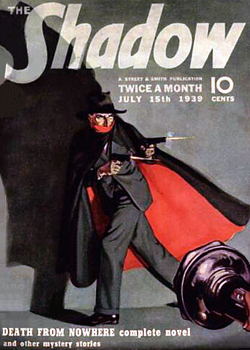 |
|---|---|
Szilard persuaded Fermi and Herbert L. Anderson to try a larger experiment using 500 pounds (230 kg) of uranium. To maximize the chance of fission, they needed a neutron moderator to slow the neutrons down. Hydrogen was a known moderator, so they used water. The results were disappointing. It became apparent that hydrogen slowed neutrons down, but also absorbed them, leaving fewer for the chain reaction. Szilard then suggested Fermi use carbon, in the form of graphite. He felt he would need about 50 tonnes (49 long tons; 55 short tons) of graphite and 5 tonnes (4.9 long tons; 5.5 short tons) of uranium. As a back-up plan, Szilard also considered where he might find a few tons of heavy water; deuterium would not absorb neutrons like ordinary hydrogen, but would have the similar value as a moderator. Such quantities of materiel would require a lot of money.
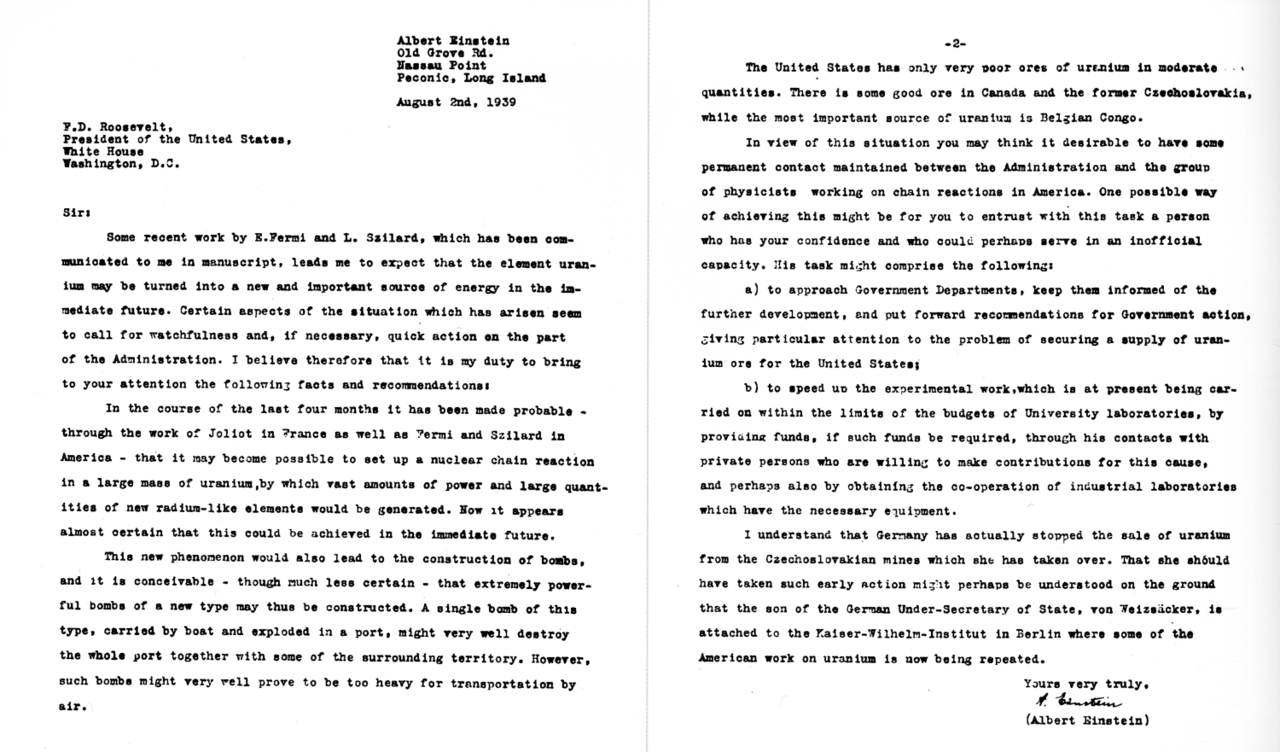 |
|---|
Szilard drafted a confidential letter to the President, Franklin D. Roosevelt, explaining the possibility of nuclear weapons, warning of German nuclear weapon project, and encouraging the development of a program that could result in their creation. With the help of Wigner and Edward Teller, he approached his old friend and collaborator Einstein in August 1939, and convinced him to sign the letter, lending his fame to the proposal. The Einstein-Szilard letter resulted in the establishment of research into nuclear fission by the U.S. government, and ultimately to the creation of the Manhattan Project. Roosevelt gave the letter to his aide, Brigadier General Edwin M. "Pa" Watson with the instruction: "Pa, this requires action!"
Fermi and Szilard met with representatives of National Carbon Company, who manufactured graphite, where Szilard made another important discovery. By quizzing them about impurities in their graphite, he found that it contained boron, a neutron absorber. He then had graphite manufacturers produce boron-free graphite. Had he not done so, they might have concluded, as the German nuclear weapon project did, that graphite was unsuitable for use as a neutron moderator. Like the German project, Fermi and Szilard still believed that enormous quantities of uranium would be required for an atomic bomb, and therefore concentrated on producing a controlled chain reaction. Fermi determined that fissioning uranium atom produced 1.73 neutrons on average. It was enough, but a careful design was call for to minimize losses. Szilard worked up various designs for a nuclear reactor. "If the uranium project could have been run on ideas alone," Wigner later remarked, "no one but Leo Szilard would have been needed."
After the war, Szilard switched to biology. He invented the chemostat, discovered feedback inhibition, and was involved in the first cloning of a human cell. He publicly sounded the alarm against the development of the cobalt bomb, a new kind of nuclear weapon that might destroy all life on the planet. He helped found the Salk Institute for Biological Studies, where he became a resident fellow.
In 1960, Szilard was diagnosed with bladder cancer. He underwent cobalt therapy at New York's Memorial Sloan-Kettering Hospital using a cobalt 60 treatment regimen that he designed himself. He knew the properties of this isotope also from his estimates about the salted bombs with cobalt. A second round of treatment with an increased dose followed in 1962. The doctors tried to tell him that the increased radiation dose would kill him, but he said it wouldn't, and that anyway he would die without it. The higher dose did its job and his cancer never returned. This treatment became standard for many cancers and is still used.
1930- The Shadow 1938-1950 Golden Age of Comic Books 1939- Batman 1956-1970 Silver Age of Comic Books 1963 X-Men 1970-1985 Bronze Age of Comic Books 1985- Modern Age of Comic Books 1986 Watchmen
 |
|---|
 |
 |
 |
|---|---|---|
The Wright brothers designed, manufactured, and sold their own line of bicycles and used the profits to fund their aircraft research.
 |
 |
 |
|---|---|---|
They began by designing wings and gliders.
 |
 |
|---|---|
They were the first to use wind tunnels to test wings. Their wing design eclipsed the European designs.
 |
|---|
 |
 |
 |
|---|---|---|
They advanced the design of propellers.
 |
 |
 |
|---|---|---|
 |
|---|
 |
|---|
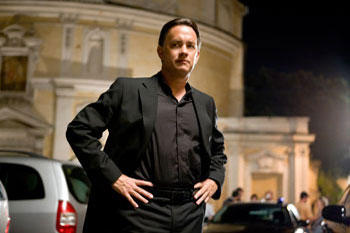 |
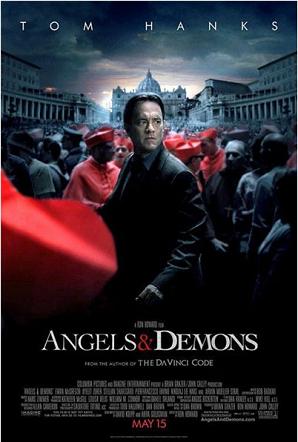 |
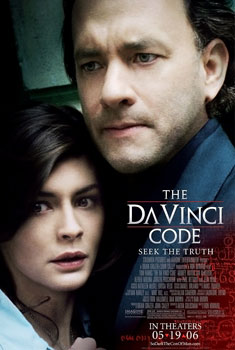 |
|
|---|---|---|---|
Why should you study hard in school? Because if The Vatican needs a Sherlock Holms type person for a glorious mission, you want to be the one they call.
Camerlengo Religion is flawed, but only because men is flawed,
all men, including this one.
Vetra He chose the name Luke.
Langdon There's been many Marks and Johns, never a Luke
Camerlengo It's said he was a doctor.
Vetra It's quite a message, science and faith all in one.
Camerlengo The world is in need of both.
Camerlengo Professor Langdon, thanks be to God for sending someone
to protect this church.
Langdon I don't believe he sent me, Father.
Camerlengo Oh my son, of course he did.
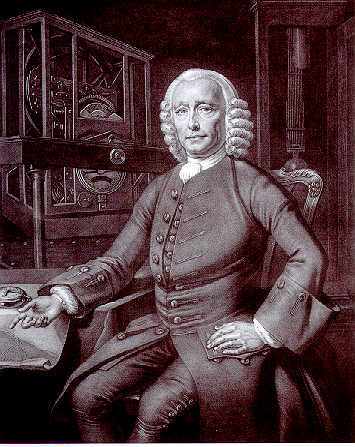 |
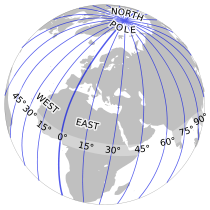 |
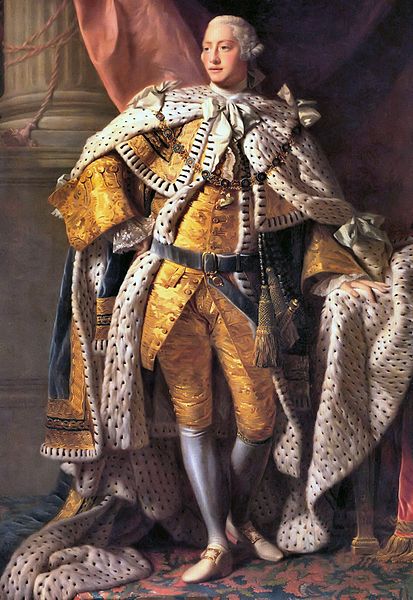 |
|---|---|---|
In 1714, the British Parliament established the "Longitude Prize" for anyone who could find an accurate method for determing longitude at sea.
John Harrison solved the problem by developing precise clocks but Parliament refused to pay out. In 1772, Harrison gave one of his clocks to King George III who personally tested it and found it to be accurate to 1/3 of one second per day. King George III advised Harrison to petition Parliament for the full prize after threatening to appear in person to dress them down.
The dumbass: Nevil Maskelyne
For every badass there is an equal and opposite dumbass. Maskelyne was the chairman of the board responsible for awarding the Longitude prize and he refused to award it to Harrison.
Maskelyne developed the "Lunar distance method" for determing longitude, which was decisively defeated by Harrison's clocks in a test at Barbados. Also, James Cook abandoned the lunar distance method after his first world voyage and used Harrison's clocks for his 2nd and 3rd voyages.
From Wikipedia: "Cook's log is full of praise for the watch and the charts of the southern Pacific Ocean he made with its use were remarkably accurate."
Maskelyne held the post of "Astronomer Royal" and was hence in charge of awarding the Longitude Prize. He opposed awarding it to Harrison and Harrison was instead paid for his chronometers by an act of parliament.
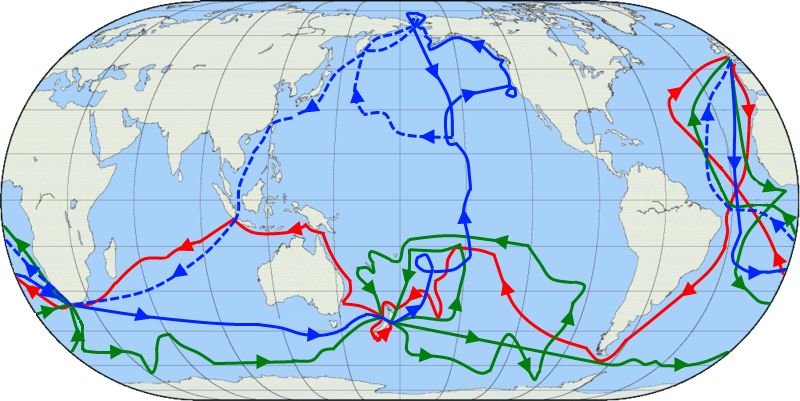 |
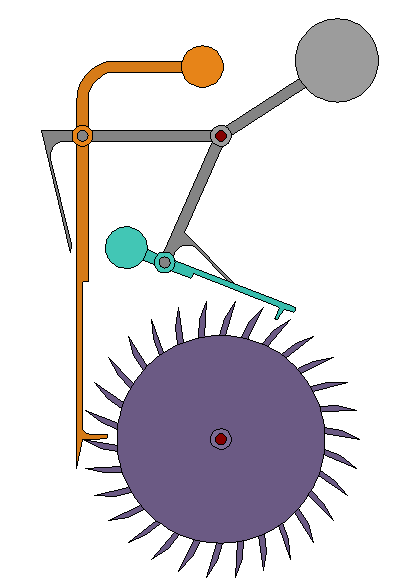 |
|
|---|---|---|
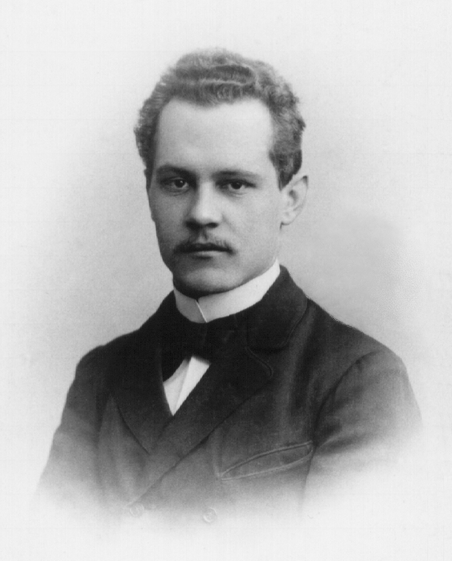 |
|---|
Sommerfeld was a theoretical physicist who pioneered developments in atomic and quantum physics, and also educated and mentored a large number of students for the new era of theoretical physics. He served as PhD supervisor for more Nobel prize winners in physics than any other supervisor to date. He introduced the 2nd quantum number (azimuthal quantum number) and the 4th quantum number (spin quantum number). He also introduced the fine-structure constant and pioneered X-ray wave teory.
Sommerfeld studied mathematics and physical sciences at the Albertina University of his native city, Konigsberg, East Prussia. His participation in the student fraternity Deutsche Burschenschaft resulted in a fencing scar on his face. He received his Ph.D. in 1891 (age 23). With his turned up moustache, his physical build, his Prussian bearing, and the fencing scar on his face, he gave the impression of being a colonel in the hussars.
Up until the late 19th century and early 20th century, experimental physics in Germany was considered as having a higher status within the community. However, in the early 20th century, theorists, such as Sommerfeld at Munich and Max Born at the University of Gottingen, with their early training in mathematics, turned this around so that mathematical physics, i.e., theoretical physics, became the prime mover, and experimental physics was used to verify or advance theory.
Four of Sommerfeld's doctoral students, Heisenberg, Pauli, Debye, and Bethe went on to win Nobel Prizes, while others, most notably, Heitler, Peierls, Bechert, Bruck, Ewald, Feenberg, Frohlich, Fues, Guillemin, Honl, Hopf, Kratzer, Laporte, Lenz, Meissner, Seeliger, Stuckelberg, Welker, Wentzel, Lande, and Brillouin became famous in their own right. Three of Sommerfeld's postgraduate students, Pauling, Rabi and von Laue, won Nobel Prizes, and ten others, Allis, Condon, Eckart, Kemble, Houston, Herzfeld, Kossel, Morse, Robertson, Rubinowicz went on to become famous in their own right. Also, as a mark of the prowess of Sommerfeld's school of theoretical physics and the rise of theoretical physics in the early 1900s, as of 1928, nearly one-third of the ordinarius professors of theoretical physics in the German-speaking world were students of Sommerfeld.
Max Born believed Sommerfeld's abilities included the "discovery and development of talents." Albert Einstein told Sommerfeld: "What I especially admire about you is that you have, as it were, pounded out of the soil such a large number of young talents." Sommerfeld's style as a professor and institute director did not put distance between him and his colleagues and students. He invited collaboration from them, and their ideas often influenced his own views in physics. He entertained them in his home and met with them in cafes before and after seminars and colloquia. Sommerfeld owned an alpine ski hut to which students were often invited for discussions of physics as demanding as the sport.
In 1918, Sommerfeld succeeded Einstein as chair of the Deutsche Physikalische Gesellschaft (DPG). One of his accomplishments was the founding of a new journal. The scientific papers published in DPG journals became so voluminous, a committee of the DPG, in 1919, recommended the establishment of Zeitschrift fur Physik for publication of original research articles, which commenced in 1920. Since any reputable scientist could have their article published without refereeing, time between submission and publication was very rapid - as fast as two weeks time. This greatly stimulated the scientific theoretical developments, especially that of quantum mechanics in Germany at that time, as this journal was the preferred publication vehicle for the new generation of quantum theorists with avant-garde views. Today, physicists use www.arxiv.org for rapid publication.
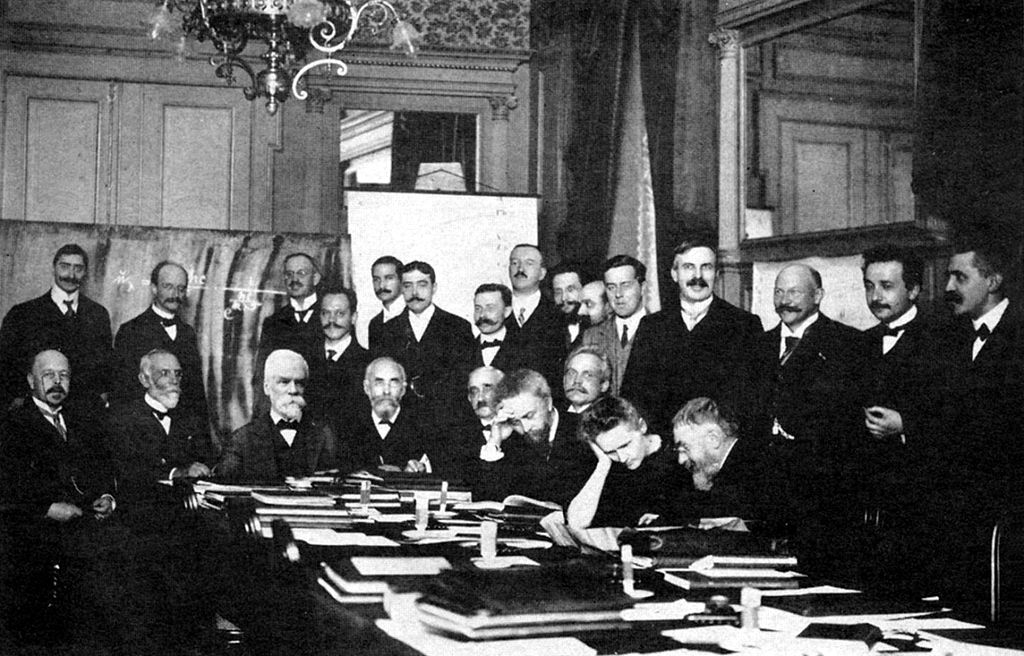 |
|---|
Seated (L-R): W. Nernst, M. Brillouin, .E Solvay, H. Lorentz, E. Warburg, J. Perrin, W. Wien, M. Sklodowska-Curie, and H. Poincare. Standing (L-R): R. Goldschmidt, M. Planck, H. Rubens, A. Sommerfeld, F. Lindemann, M. de Broglie, M. Knudsen, F. Hasenohrl, G. Hostelet, E. Herzen, J.H. Jeans, E. Rutherford, H. Kamerlingh Onnes, A. Einstein and P. Langevin.
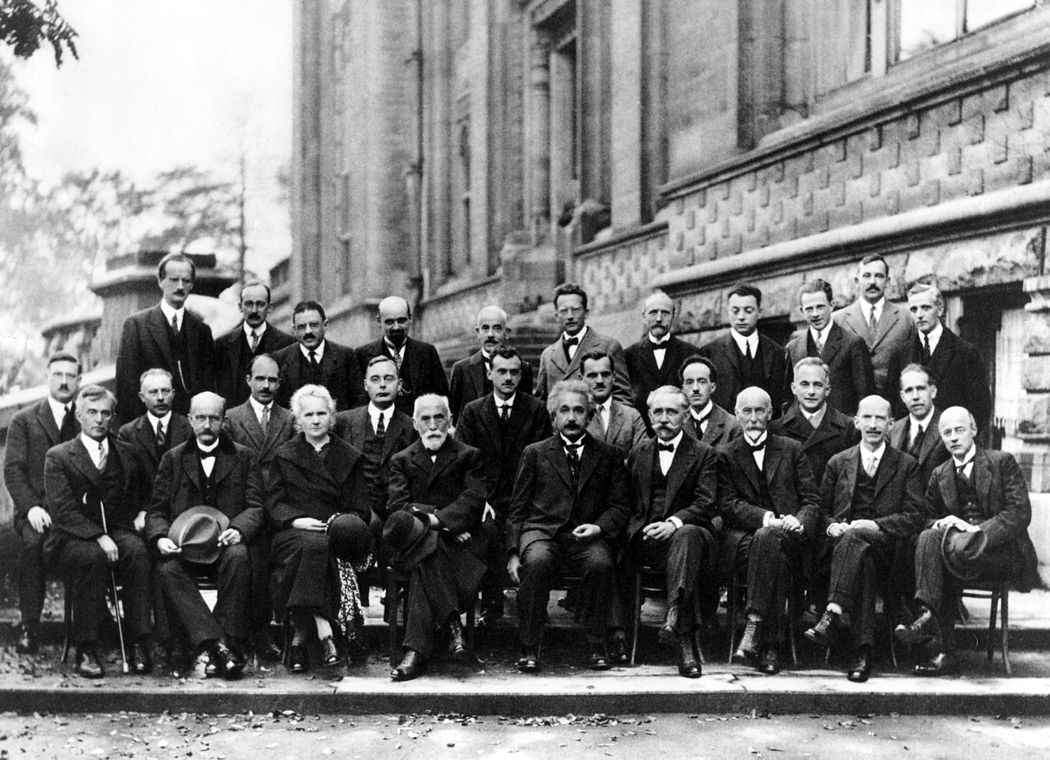 |
|---|
A. Piccard, E. Henriot, P. Ehrenfest, E. Herzen, Th. de Donder, E. Schrödinger, J.E. Verschaffelt, W. Pauli, W. Heisenberg, R.H. Fowler, L. Brillouin; P. Debye, M. Knudsen, W.L. Bragg, H.A. Kramers, P.A.M. Dirac, A.H. Compton, L. de Broglie, M. Born, N. Bohr; I. Langmuir, M. Planck, M. Sklodowska-Curie, H.A. Lorentz, A. Einstein, P. Langevin, Ch.-E. Guye, C.T.R. Wilson, O.W. Richardson
Perhaps the most famous conference was the October 1927 Fifth Solvay International Conference on Electrons and Photons, where the world's most notable physicists met to discuss the newly formulated quantum theory. The leading figures were Albert Einstein and Niels Bohr. Einstein, disenchanted with Heisenberg's uncertainty principle, remarked "God does not play dice". Bohr replied, "Einstein, stop telling God what to do". (See Bohr–Einstein debates.) 17 of the 29 attendees were or became Nobel Prize winners.
This conference was also the culmination of the struggle between Einstein and the scientific realists, who wanted strict rules of scientific method as laid out by Charles Peirce and Karl Popper, versus Bohr and the instrumentalists, who wanted looser rules based on outcomes. Starting at this point, the instrumentalists won, instrumentalism having been seen as the norm ever since.
Many of the physicists of the early 20th century were also musicians, and they often played in small ensembles together. Physicists who played instruments include:
Albert Einstein Violin Werner Heisenberg Piano Max Born Piano Max Planck Piano, organ, cello William Herschel Oboe, violin, harpsichord, organ, and composition Hermann Helmholtz Piano Robert Hooke Organ Christian Huygens Harpsichord Leonardo da Vinci Lyre Pythagoras Developed "Pythagorean tuning" Richard Feynman Bongos Simon Stevin Developed 12-tone equal tuning Thomas Jefferson Violin and cello Benjamin Franklin Viola da gamba, harpsichord, harp, glass harmonica, composition Alexander Borodin Composition, cello, piano Woldemar Voigt Violin Jack Fry Violin maker. Wrote an influential textbook on the physics of music J. S. Bach Viola, violin, organ, harpsichord Simon Ramo ViolinBach's calculations for harpsichord tuning were so sophisticated that he could legitimately be called a physicist.
Jefferson trained in physics and mathematics but there were more pressing matters at the time, such as the American Revolutionary War.
Franklin invented the glass harmonica, which became a big fad during the classical age.
da Vinci built lyres.
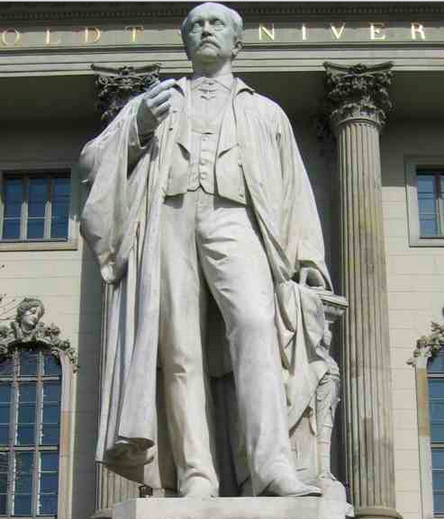 |
|---|
Invented the opthalmascope, an instrument for examining the inside of the eye.
Developed theories of eye focus, depth perception, color vision, and motion perception.
Invented the "Helmholtz resonator" for measuring the frequency spectrum of sound.
Discovered the shape of the oscillaton of a violin string.
Demonstrated that different combinations of resonators could mimic vowel sounds.
Measured the speed of neurons.
Developed the principle of conservation of energy and demonstrated that it applies to mechanics, heat, light, electricity and magnetism.
Demonstrated that muscle metabolism conserves energy.
Invented the field of psychology with his student Wilhelm Wundt.
In 1863, Helmholtz published "On the Sensations of Tone", which became the standard reference for the next century.
.jpg) |
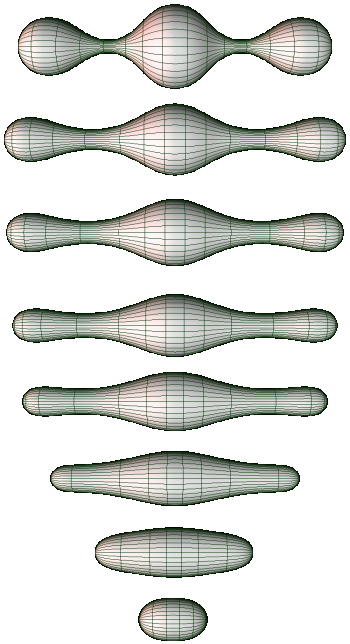 |
|---|---|
 |
|
|---|---|
The Poincare conjecture, proposed by French mathematician Henri Poincare in 1904, was the most famous open problem in topology. Any loop on a 3-sphere—as exemplified by the set of points at a distance of 1 from the origin in four-dimensional Euclidean space—can be contracted to a point. The Poincare conjecture asserts that any closed three-dimensional manifold such that any loop can be contracted to a point is topologically a 3-sphere. The analogous result has been known to be true in dimensions greater than or equal to five since 1960 as in the work of Stephen Smale. The four-dimensional case resisted longer, finally being solved in 1982 by Michael Freedman. But the case of three-manifolds turned out to be the hardest of them all. Roughly speaking, this is because in topologically manipulating a three-manifold, there are too few dimensions to move "problematic regions" out of the way without interfering with something else. In 1999, the Clay Mathematics Institute announced the Millennium Prize Problems: $1,000,000 prizes for the proof of any of seven conjectures, including the Poincare conjecture. There was a wide agreement that a successful proof of any of these would constitute a landmark event in the history of mathematics.
1904 Poincare conjecture published
1981 Hamilton publishes the theory of Ricci flow
2002 Perelman publishes a proof of the Poincare conjecture,
using Ricci flow theory.
Perelman modified Hamilton's program for a proof of the conjecture, in
which the central idea is the notion of the Ricci flow.
In May 2006, a committee of nine mathematicians voted to award Perelman a Fields Medal for his work on the Poincare conjecture. However, Perelman declined to accept the prize. On 18 March 2010, Perelman was awarded a Millennium Prize for solving the problem.On June 8, 2010, he did not attend a ceremony in his honor at the Institut Oceanographique, Paris to accept his $1 million prize.
To solve the Poincare conjecture, Perelman worked for 7 years in isolation. If you want to solve a problem of this magnitude then this is what it takes.
The dumbasses:
In 2006, the Asian Journal of Mathematicsn June 2 published a paper by Zhu Xiping of Sun Yat-sen University in China and Huai-Dong Cao of Lehigh University in Pennsylvania, giving a complete description of Perelman's proof of the Poincare and the geometrization conjectures. The June 2006 paper claimed: "This proof should be considered as the crowning achievement of the Hamilton-Perelman theory of Ricci flow." (Asked about the paper, Perelman said the pair had not contributed anything original, and had simply reworked his proof because they "did not quite understand the argument".
On December 3, 2006, Cao and Zhu retracted the original version of their paper, which was titled "A Complete Proof of the Poincare and Geometrization Conjectures - Applications of the Hamilton-Perelman Theory of the Ricci Flow" and posted revised version, renamed, more modestly, "Hamilton-Perelman's Proof of the Poincare Conjecture and the Geometrization Conjecture". Rather than the grand claim of the original abstract, "we give a complete proof", suggesting the proof is by the authors, the revised abstract states: "we give a detailed exposition of a complete proof". The authors also removed the phrase "crowning achievement" from the abstract.
In November 2006, Cao and Zhu published an erratum disclosing that they had failed to cite properly the previous work of Kleiner and Lott published in 2003. In the same issue, the AJM editorial board issued an apology for what it called "incautions" in the Cao-Zhu paper.
In August 2012, Mochizuki released what is claimed to be a proof of the abc conjecture; however, the claimed proof is very long and complex and is still being verified for correctness by other mathematicians.
As of December 2014, through discussion with Mohamed Saidi of University of Exeter, Yuichiro Hoshi and Go Yamashita of the Research Institute for Mathematical Sciences in Kyoto University, Mochizuki himself said "I have yet to hear of even a single problem that relates to the essential thrust or validity of the theory" on the progress report. According to Mochizuki, "At least with regard to the substantive mathematical aspects of such a verification, the verification of Inter-universal Teichmuller theory is, for all practical purposes, complete". He said, however, "Nevertheless, as a precautionary measure, in light of the importance of the theory and the novelty of the techniques that underlie the theory, it seems appropriate that a bit more time be allowed to elapse before a final official declaration of the completion of the verification of Inter-universal Teichmuller theory is made."
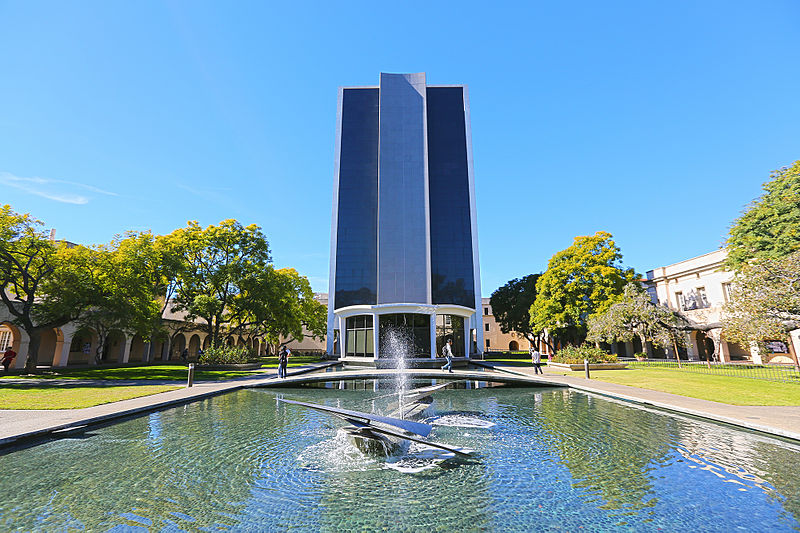
| 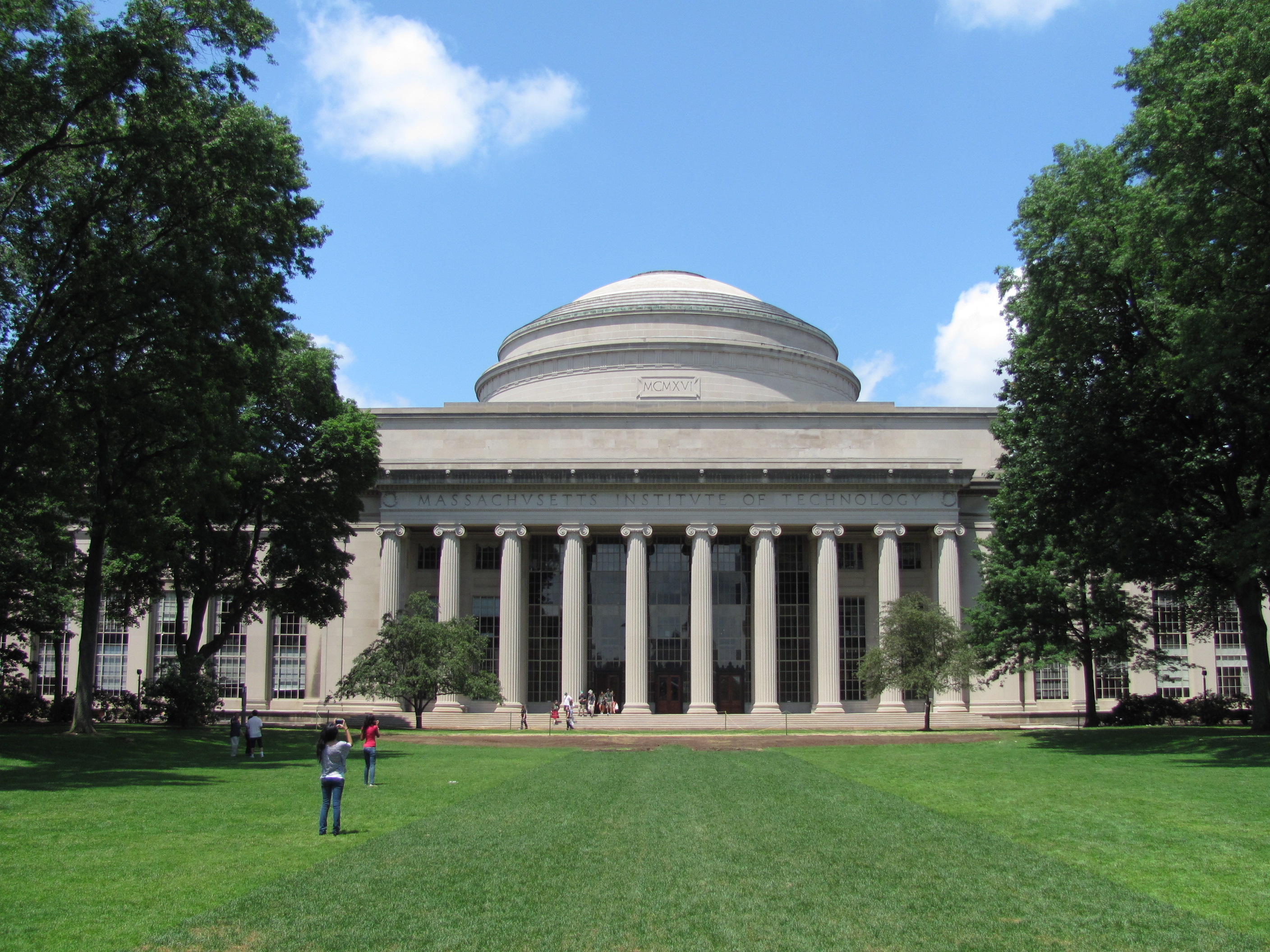 |
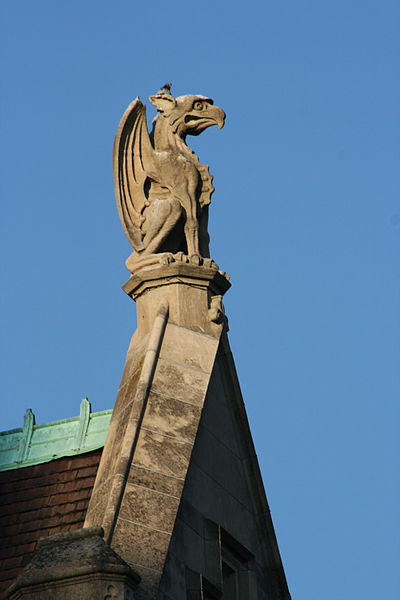 |
|
|---|---|---|---|
 |
||
|---|---|---|
Core courses required of all students:
Caltech MIT U. Chicago CUNY Harvard Juilliard MSM
Mathematics * * * * *
Calculus * * *
Calculus II * *
Mechanics (with Calculus) * *
Electromag (with Calculus) * *
Differential equations *
Quantum Mechanics *
Thermodynamics *
Chemistry * *
Biology * * * * *
Lab * * * * *
Ear training * *
Chamber orchestra * *
Music theory * *
Sports * *
The University of Chicago courageously stands for free speech in an age where free speech
is under attack.
The dumbass: Harvard, which caved to grade inflation.
Stevin was pivotal to the development of physics, mathematics, engineering, and music. The following timeline puts his contributions in context.
In the 6th century BCE, Pythagoras developed a 12-tone scale based on the ratios 2/1 and 3/2. This tuning was widely used until the 16th century CE. Pythagorean tuning gives good results for fourths and fifths but poor results for thirds, and it is not possible to write contrapuntal music.
In the 2nd century CE, Ptolemy developed the "major scale", based on the frequency ratios 2/1, 3/2, 4/3, and 5/4. This scale allows for consonant thirds.
1523 Pietro Anon introduced "meantone tuning" to fix the thirds, using a
frequency ratio of 5/4 for major thirds. His treatise "Thoscanello de la
musica" expanded the possibilities for chords and harmony.
1555 Amati develops the 4-string violin
1584 Equal tuning developed. Equal tuning divides the octave logarithmically.
The first known examples were:
Vincenzo Galilei in 1584 (Father of Galileo Galilei)
Zhu Zaiyu in 1584
Simon Stevin in 1585
1585 Simon Stevin introduces decimal numbers to Europe.
(For example, writing 1/8 as 0.125)
1586 Simon Stevin drops objects of varying mass from a church tower to demonstrate that
they accelerate uniformly.
1604 Galileo publishes a mathematical description of acceleration.
1614 Logarithms invented by John Napier, making possible precise calculations
of equal tuning ratios. Stevin's calculations were mathematically sound but
the frequencies couldn't be calculated with precision until logarithms were
developed.
1637 Cartesian geometry published by Fermat and Descartes.
This was the crucial development that triggered an explosion of mathematics
and opened the way for the calculus.
1684 Leibniz publishes the calculus.
1687 Newton publishes the Principia Mathematica, which contained the calculus,
the laws of motion (F=MA), and a proof that planets orbit as ellipses.
1722 Bach publishes "The Well Tempered Clavier".
Until ~ 1650, most keyboards used meantone tuning. This tuning gives good
results if you confine yourself to a small number of keys and use few
accidentals, but it can't be made to work for all keys.
J.S. Bach tuned his own harpsichords and clavichords and he customized the tuning to work in all 24 keys ("well temperament"). He demonstrated its effectiveness in his 1722 work "The Well Tempered Clavier".
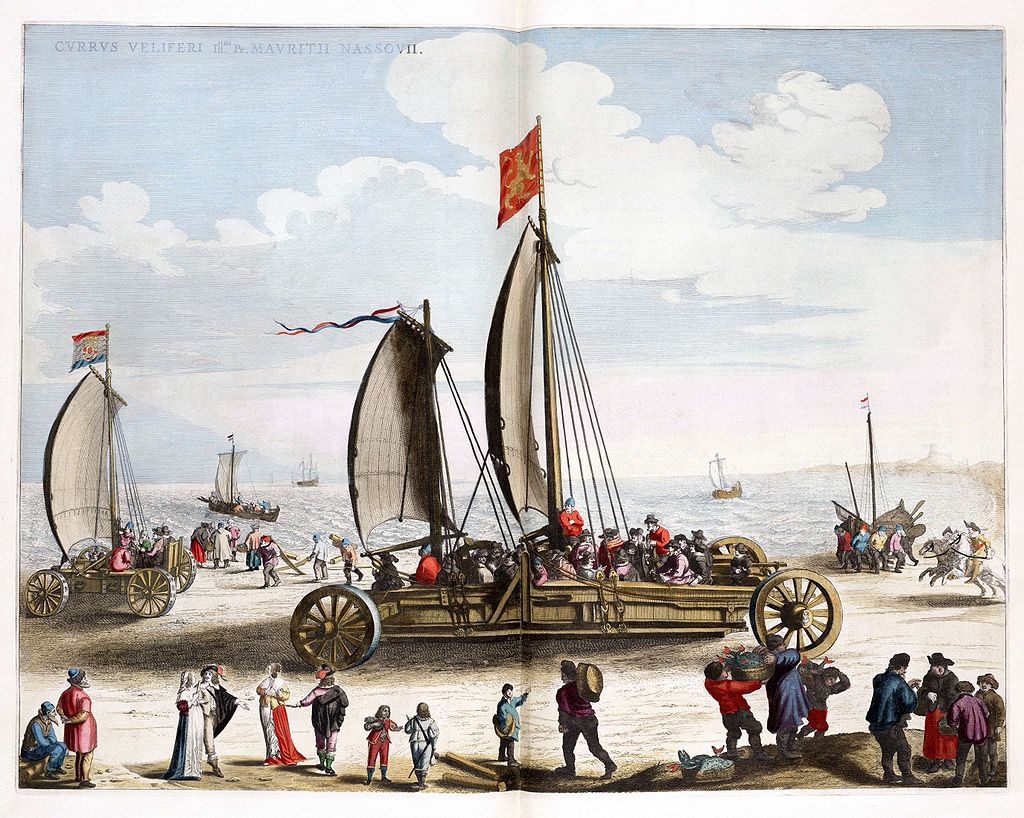 |
|---|
Stevin's work in the waterstaet involved improvements to the sluices and spillways to control flooding. Windmills were already in use to pump the water out but in Van de Molens (On mills), he suggested improvements including ideas that the wheels should move slowly with a better system for meshing of the gear teeth. These improved the efficiency of the windmills used in pumping water out of the polders by three times.
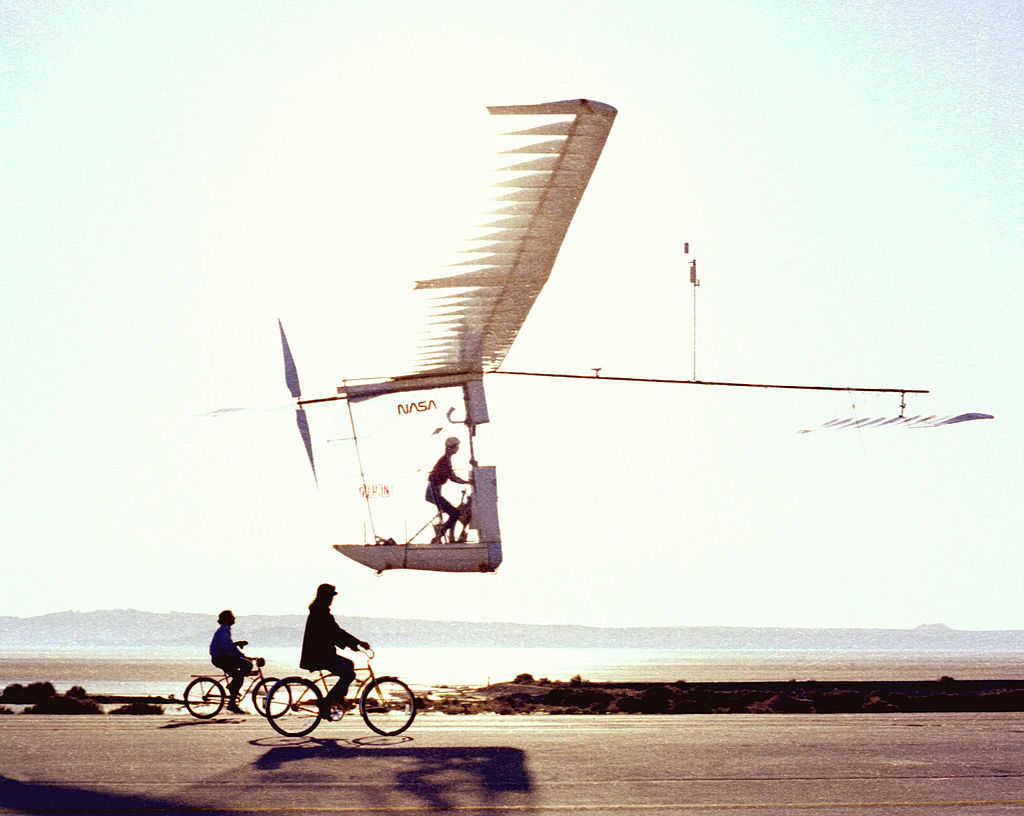 |
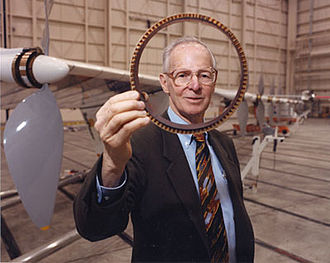 |
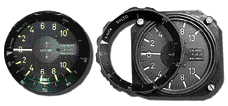 |
|---|---|---|
Built the first human-powered aircraft.
Founded the theory of gliding.
World gliding champion.
In 1985 he was commissioned to build a halfscale working replica of the pterosaur Quetzalcoatlus for the Smithsonian Institution, following a workshop in 1984 concluded that such a replica was feasible. The completed remote-controwhichlled flying reptile, with a wingspan of 18 feet, was filmed over Death Valley, California in 1986 for the Smithsonian's IMAX film On the Wing. It flew successfully several times before being severely damaged in a crash at an airshow at Andrews AFB in Maryland.
 |
|---|
De Klerk was was the seventh and last head of state of South Africa under the apartheid era. He brokered the end of apartheid, South Africa's racial segregation policy, and supported the reformation of South Africa into a multi-racial democracy by entering into the negotiations that resulted in all citizens, including the country's black majority, having equal voting and other rights. He won the Nobel Peace Prize in 1993 along with Nelson Mandela for his role in the ending of apartheid.
In some of his first speeches after assuming the party leadership, he called for a non-racist South Africa and for negotiations about the country's future. A couple of months later, in February 1990, he suddenly lifted the bans on the African National Congress (ANC) and the Communist Party of South Africa, released Nelson Mandela and also many others who had been imprisoned solely on the grounds of their membership in the ANC or CPSA.
In 1990, de Klerk gave orders to end South Africa's nuclear weapons programme; the process of nuclear disarmament was essentially completed in 1991. The existence of the programme was not officially acknowledged before 1993.
After the first universal elections in 1994, de Klerk became deputy president in the government of national unity under Nelson Mandela, a post he kept until 1996. In 1997 he resigned the leadership of the National Party and retired from politics.
As a result of de Klerk's actions South Africa's ban from the World Cup was lifted in 1992, and in 2010, South Africa hosted the World Cup.
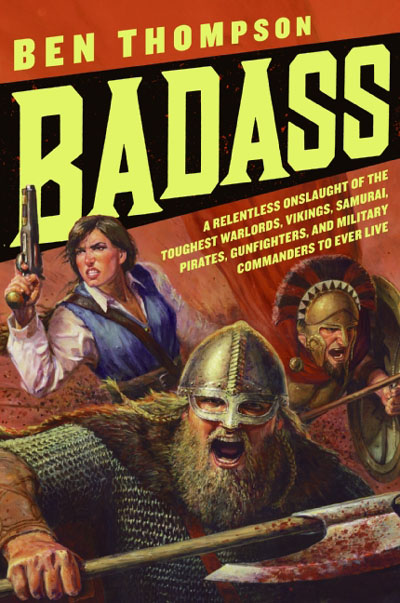 |
|---|
Ben Thompson's Badass of the Week site is a fine piece of literature, and there are many badasses that I don't need to write about because Thompson has already done a fine job. Some of these badasses are:
Nikola Tesla
Tycho Brahe
Leonardo Da Vinci
Fridtjof Nansen
Andrei Sakharov
Spock
Indiana Jones
Abraham Van Helsing
Angus MacGyver
The Honey Badger
Christopher Lee
Stephen Colbert
John McCain
George Orwell
James Kirk
Winston Churchill
Odysseus
Zinedine Zidane
Theodore Roosevelt
Ernest Shackleton
Moby Dick
The 300 Spartans
Jackie Chan
Ok, so I *did* write an article about Tesla. Couldn't resist.
Among past and present UFC champions, most are wrestlers.
UFC heavyweight champions:
Cain Velasquez Wrestled at Arizona State and placed 4th nationally.
Junior Dos Santos Brazilian jiu-jitsu
Shane Carwin Wrestled for Western State College and won the
NCAA Division II national championship
Frank Mir Wrestled for Bonanza High School in Nevada and won the
state championship
Brock Lesnar Wrestled for Minnesota and won the national championship
Antonio Nogueira Judo and Brazilian jiu-jitsu
Randy Couture Wrestled for Oklahoma State and was twice runner up at the
national championships
Tim Silva Wrestled for Ellsworth High School
Andrei Arlovski Silver medal at the sambo world championships
Ricco Rodriguez Brazilian jiu-jitsu world champion
Josh Barnett Wrestled for Ballard High School
Kevin Randleman Wrestled for Ohio State and won the national championship twice
Bas Rutten Muay Thai kickboxing
Maurice Smith World kickboxing champion
Mark Coleman Wrestled for Ohio State and won the national championship
UFC light heavyweight champions
Jon Jones Wrestled for Iowa Central Community College and won the
Junior College national championship
Mauricio Rua Wrestling and Brazilian jiu-jitsu
Lyoto Machida 2-time Brazilian sumo champion
Rashad Evans Wrestled for Michigan State and placed 3rd at the Big Ten
championships
Forrest Griffin
Quinton Jackson Wrestled for Raleigh-Egypt High School in Tennessee and placed
5th at the state championships
Chuck Liddell Wrestled for California Polytechnic State University
Randy Couture Wrestled for Oklahoma State and was twice runner up at the
national championships
Vitor Belfort Brazilian jiu-jitsu
Tito Ortiz Wrestled for Huntington Beach High School and placed 4th
at the California state championships
Frank Shamrock Submission fighting
UFC middleweight champions
Chris Weidman Wrestled for Hoffstra and placed 3rd at the national championships
Anderson Silva Judo, Brazilian jiu-jitsu
Rich Franklin Brazilian jiu-jitsu
Evan Tanner Wrestled for Caprock High School and won the Texas state
championship twice
Murilo Bustamante Judo, Brazilian jiu-jitsu world champion
Dave Menne Wrestled for Forest Lake Area High School, Minnesota
UFC welterweight champions
Robbie Lawler Wrestled for Bettendorf High School, Iowa, where he received
All-State honors
Johnny Hendricks Wrestled for Oklahoma State and won the national championship
Carlos Condit Wrestled for Cibola High School, New Mexico
Georges St-Pierre Wrestling, Hockey, Brazilian jiu-jitsu
Matt Serra Wrestling, Brazilian jiu-jitsu
Matt Hughes Wrestled for Eastern Illinois University and placed 5th at
the national championships
B.J. Penn Brazilian jiu-jitsu
Carlos Newton Wrestling, judo, Brazilian jiu-jitsu
Pat Miletich Wrestled for Bettendorf High School, Iowa
UFC women's bantamweight champions
Ronda Rousey Silver medal at the 2007 Judo world championshipsUFC women's strawweight champions
Joanna Jedrzejczyk Won 6 Muay Thai world championships Carla Esparza Wrestled for Menlo College and was twice an All-AmericanBen Askren wrestled for the University of Missouri where he was twice national champion. He is also a former Bellator champion and is currently the One-FC champion. Askren is undefeated in MMA, using wrestling to dominate his opponents.
Interviewer: Other than wrestling what would you say the best base to be a
successful MMA fighter would be?
Ben Askren: Wrestling
The dumbasses: Dana White and the UFC, for acting like petty medieval lords.
It's hard to say who is more unpleasant to watch; White or King Joffrey from Game of
Thrones.
*) The UFC blocks most fights from being posted to youtube.
*) Fighter contracts stifle the ability of the fighters to creatively promote themselves.
*) The UFC has the hubris to patent the geometrical shape of an octagon.
 |
 |
 |
 |
|---|---|---|---|
 |
 |
 |
 |
 |
|---|---|---|---|---|
 |
 |
 |
 |
|---|---|---|---|
 |
 |
 |
 |
|---|---|---|---|
 |
 |
|---|---|
Iron Man Physicist and mechanical engineer
The Hulk Nuclear physicist. Irradiated with gamma rays
Magneto Physicist. Mutant. Control over magnetic fields.
Professor X Physicist. Mutant. Telepath.
Jarvis AI created by Tony Stark.
The Vision AI created from Jarvis. Possesses the mindstone. Vibranium body.
Howard Stark Physicist and mechanical engineer
The Beast Physicist and biochemist
Bruce Wayne Physicist and mechanical engineer
Silver Surfer Astrophysicist
The Shadow Shaolin monk
Dr. Manhattan Physicist and clockmaker. Atomized in an "intrinsic field subtractor".
The Owl Physicist and mechanical engineer
Batman Physicist and mechanical engineer
Dr. Selvig Astrophysicist
Jane Selvig Astrophysicist
Ozzymandias Physicist
Mr. Fantastic Physicist. Acquired superpowers from cosmic rays.
The Thing Engineer. Fighter pilot. Football player.
Acquired superpowers from cosmic rays
In most instances where characters acquire superpowers, physics is involved.
 |
|---|
The giants upon whose shoulders Newton stood were standing upon Chuck's shoulders.
Chuck spaghettifies black holes.
The International Astronomical Union designates the Earth-Chuck system as a double planet.
If Chuck had been at Thermopylae, the movie would have been titled "1".
All geodesics end at Chuck's foot.
The mass of the Higgs boson is given by Chuck.
Chuck's protons never decay.
Erdos has a Chuck number of 1.
That which does not destroy us makes us more like Chuck.
Chuck can calculate electricity and magnetism in British units.
Chuck can metabolize dark energy.
Chuck does a roundhouse kick by spinning the Earth and holding out his foot.
The existence of Chuck quantizes the electric charge.
Chuck's demon kicks the butt of Maxwell's demon.
The SI unit of action is the "Chuck".
Chuck follows the "principle of most action".
Stephen Hawking retired from the Lucasian Chair to take up the Norris Chair.
When Chuck fights with the Avenges he is known as "Denim Man".
Iron man's suit is constructed from an Iron-Denim alloy developed by Chuck.
Once upon a time, Chuck wrote a letter and handed it to Szilard, who handed it to Einstein, who handed it to Roosevelt.
Robert Zubrin was going to abandon hope on Mars but then Chuck joined the Mars Society.
God uses Chuck's units.
Chuck tosses dwarfs.
Hilbert's list originally contained 24 problems and the first person he showed it to was Chuck.
God wanted to make the universe supersymmetric but Chuck told him it's a dumb idea.
Chuck can make python pass by reference.
Chuck represents spinors with denim.
When Chuck picked up a viola, violinists stopped telling viola jokes.
The existence of Chuck causes the Zermelo Fraenkel axioms of set theory to break down.
Chuck is impervious to Lebesque integration.
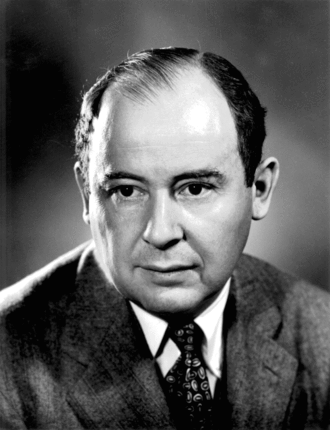 |
|---|
Von Neumann's ability to instantaneously perform complex operations in his head stunned other mathematicians. Eugene Wigner wrote that, seeing von Neumann's mind at work, "one had the impression of a perfect instrument whose gears were machined to mesh accurately to a thousandth of an inch." Paul Halmos states that "von Neumann's speed was awe-inspiring." Israel Halperin said: "Keeping up with him was ... impossible. The feeling was you were on a tricycle chasing a racing car." Edward Teller wrote that von Neumann effortlessly outdid anybody he ever met, and said "I never could keep up with him". Teller also said "von Neumann would carry on a conversation with my 3-year-old son, and the two of them would talk as equals, and I sometimes wondered if he used the same principle when he talked to the rest of us. Most people avoid thinking if they can, some of us are addicted to thinking, but von Neumann actually enjoyed thinking, maybe even to the exclusion of everything else."
Lothar Wolfgang Nordheim described von Neumann as the "fastest mind I ever met", and Jacob Bronowski wrote "He was the cleverest man I ever knew, without exception. He was a genius." George Polya, whose lectures at ETH Zurich von Neumann attended as a student, said "Johnny was the only student I was ever afraid of. If in the course of a lecture I stated an unsolved problem, the chances were he'd come to me at the end of the lecture with the complete solution scribbled on a slip of paper." Halmos recounts a story told by Nichoulas Metropolis, concerning the speed of von Neumann's calculations, when somebody asked von Neumann to solve the famous fly puzzle:
Two bicyclists start twenty miles apart and head toward each other, each going at a steady rate of 10 mph. At the same time a fly that travels at a steady 15 mph starts from the front wheel of the southbound bicycle and flies to the front wheel of the northbound one, then turns around and flies to the front wheel of the southbound one again, and continues in this manner till he is crushed between the two front wheels. Question: what total distance did the fly cover? The slow way to find the answer is to calculate what distance the fly covers on the first, northbound, leg of the trip, then on the second, southbound, leg, then on the third, etc., etc., and, finally, to sum the infinite series so obtained. The quick way is to observe that the bicycles meet exactly one hour after their start, so that the fly had just an hour for his travels; the answer must therefore be 15 miles. When the question was put to von Neumann, he solved it in an instant, and thereby disappointed the questioner: "Oh, you must have heard the trick before!" "What trick?" asked von Neumann, "All I did was sum the geometric series."
It's claimed that Von Neumann had a very strong eidetic memory, commonly called "photographic" memory—though such a phenomenon has never been scientifically documented in a human. Herman Goldstine writes: "One of his remarkable abilities was his power of absolute recall. As far as I could tell, von Neumann was able on once reading a book or article to quote it back verbatim; moreover, he could do it years later without hesitation. He could also translate it at no diminution in speed from its original language into English. On one occasion I tested his ability by asking him to tell me how A Tale of Two Cities started. Whereupon, without any pause, he immediately began to recite the first chapter and continued until asked to stop after about ten or fifteen minutes."
It has been said that von Neumann's intellect was absolutely unmatched. "I have sometimes wondered whether a brain like von Neumann's does not indicate a species superior to that of man", said Nobel Laureate Hans Bethe of Cornell University. "It seems fair to say that if the influence of a scientist is interpreted broadly enough to include impact on fields beyond science proper, then John von Neumann was probably the most influential mathematician who ever lived," wrote Miklos Redei in "Selected Letters."
Von Neumann had a wide range of cultural interests. Since the age of six, von Neumann had been fluent in Latin and ancient Greek, and he held a lifelong passion for ancient history, being renowned for his prodigious historical knowledge. A professor of Byzantine history once said that von Neumann had greater expertise in Byzantine history than he did.
 |
 |
 |
|---|---|---|
In 1874, Tesla evaded being drafted into the Austro-Hungarian Army by running away to Tomingaj, near Gracac. There, he explored the mountains in hunter's garb. Tesla said that this contact with nature made him stronger, both physically and mentally. He read many books while in Tomingaj, and later said that Mark Twain's works had helped him to miraculously recover from his earlier illness.
In 1875, Tesla enrolled at Austrian Polytechnic in Graz, Austria, on a Military Frontier scholarship. During his first year, Tesla never missed a lecture, earned the highest grades possible, passed nine exams (nearly twice as many required), started a Serbian culture club, and even received a letter of commendation from the dean of the technical faculty to his father, which stated, "Your son is a star of first rank." Tesla claimed that he worked from 3 a.m. to 11 p.m., no Sundays or holidays excepted.] He was "mortified when [his] father made light of [those] hard won honors." After his father's death in 1879, Tesla found a package of letters from his professors to his father, warning that unless he were removed from the school, Tesla would be killed through overwork.
 |
 |
|
|---|---|---|
In June 1884, he relocated to New York City where he was hired by Thomas Edison to work at his Edison Machine Works on Manhattan's lower east side. Tesla's work for Edison began with simple electrical engineering and quickly progressed to solving more difficult problems. Tesla was offered the task of completely redesigning the Edison Company's direct current generators. In 1885, he said that he could redesign Edison's inefficient motor and generators, making an improvement in both service and economy. According to Tesla, Edison remarked, "There's fifty thousand dollars in it for you—if you can do it." This has been noted as an odd statement from an Edison whose company was stingy with pay and who did not have that sort of cash on hand. After months of work, Tesla fulfilled the task and inquired about payment. Edison, saying that he was only joking, replied, "Tesla, you don't understand our American humor." Instead, Edison offered a US$10 a week raise over Tesla's US$18 per week salary; Tesla refused the offer and immediately resigned.
In late 1886 Tesla met Alfred S. Brown, a Western Union superintendent, and New York attorney Charles F. Peck. The two men were experienced in setting up companies and promoting inventions and patents for financial gain. Based on Tesla's patents and other ideas they agreed to back him financially and handle his patents. Together in April 1887 they formed the Tesla Electric Company with an agreement that profits from generated patents would go 1/3 to Tesla, 1/3 to Peck and Brown, and 1/3 to fund development. They set up a laboratory for Tesla at 89 Liberty Street in Manhattan where he worked on improving and developing new types of electric motors, generators and other devices.
One of the things Tesla developed at that laboratory in 1887 was an induction motor that ran on alternating current, a power system format that was starting to be built in Europe and the US because of its advantages in long distance high voltage transmission. The motor used polyphase current which generated a rotating magnetic field to turn the motor (a principle Tesla claimed to have conceived of in 1882). This innovative electric motor, patented in May 1888, was a simple self-starting design that did not need a commutator, thus avoiding sparking and the high maintenance of constantly servicing and replacing mechanical brushes.
 |
 |
 |
 |
|---|---|---|---|
Tesla's demonstration of his induction motor and Westinghouse's subsequent licensing of the patent, both in 1888, put Tesla firmly on the "AC" side of the so-called "War of Currents," an electrical distribution battle being waged between Thomas Edison and George Westinghouse that had been simmering since Westinghouse's first AC system in 1886 and had reached the point of all out warfare by 1888. This started out as a competition between rival lighting systems with Edison holding all the patents for DC and the incandescent light and Westinghouse using his own patented AC system to power arc lights as well as incandescent lamps of a slightly different design to get around the Edison patent. The acquisition of a feasible AC motor gave Westinghouse a key patent in building a completely integrated AC system, but the financial strain of buying up patents and hiring the engineers needed to build it meant development of Tesla's motor had to be put on hold for a while. The competition resulted in Edison Machine Works pursuing AC development in 1890 and by 1892 Thomas Edison was no longer in control of his own company, which was consolidated into the conglomerate General Electric and converting to an AC delivery system at that point.
 |
 |
|---|---|
In 1893, George Westinghouse won the bid to light the 1893 World's Columbian Exposition in Chicago with alternating current, beating out a General Electric bid by one million dollars. This World's Fair devoted a building to electrical exhibits. It was a key event in the history of AC power, as Westinghouse demonstrated the safety, reliability, and efficiency of a fully integrated alternating current system to the American public. At the Columbian Exposition, under a banner announcing the "Tesla Polyphase System", Tesla demonstrated a series of electrical effects previously performed throughout America and Europe, included using high-voltage, high-frequency alternating current to light a wireless gas-discharge lamp. An observer noted:
"Within the room was suspended two hard-rubber plates covered with tin foil. These were about fifteen feet apart, and served as terminals of the wires leading from the transformers. When the current was turned on, the lamps or tubes, which had no wires connected to them, but lay on a table between the suspended plates, or which might be held in the hand in almost any part of the room, were made luminous. These were the same experiments and the same apparatus shown by Tesla in London about two years previous, where they produced so much wonder and astonishment"
 |
 |
 |
|---|---|---|
 |
|---|
He experienced a peculiar reaction when breathing deeply. When he breathed deeply he was overcome by a feeling of lightness, as if his body had lost all weight; and he should, he concluded, be able to fly through the air merely by his will to do so. He did not learn, in boyhood, that he was unusual in this respect.
A strange power permitted him to perform unusual feats in mathematics. He possessed it from early boyhood, but had considered it a nuisance and tried to be rid of it because it seemed beyond his control. If he thought of an object it would appear before him exhibiting the appearance of solidity and massiveness. So greatly did these visions possess the attributes of actual objects that it was usually difficult for him to distinguish between vision and reality. This abnormal faculty functioned in a very useful fashion in his school work with mathematics. If he was given a problem in arithmetic or algebra, it was immaterial to him whether he went to the blackboard to work it out or whether he remained in his seat. His strange faculty permitted him to see a visioned blackboard on which the problem was written, and there appeared on this blackboard all of the operations and symbols required in working out the solution. Each step appeared much more rapidly than he could work it out by hand on the actual slate. As a result, he could give the solution almost as quickly as the whole problem was stated.
Tesla's powers of memorizing were prodigious. A quick reading of a page gave him a permanent record of it; he could always recall before his eyes a photographic record of it to be read, and could study at his convenience. Study, for Tesla, was a far different process than for the average person. He had no need for a reference library; he could consult in his mind any page of any textbook he had read, and formula, equation, or item in a table of logarithms would flash before his eyes. He could recite scores of books, complete from memory. The saving in time which this made possible in research work was tremendous.
Tesla describes his faculty as follows:
During my boyhood I had suffered from a peculiar affliction due to the appearance of images, which were often accompanied by strong flashes of light. When a word was spoken, the image of the object designated would present itself so vividly to my vision that I could not tell whether what I saw was real or not... Even though I reached out and passed my hand through it, the image would remain fixed in space.
In trying to free myself from these tormenting appearances, I tried to concentrate my thoughts on some peaceful, quieting scene I had witnessed. This would give me momentary relief; but when I had done it two or three times the remedy would begin to lose its force. Then I began to take mental excursions beyond the small world of my actual knowledge. Day and night, in imagination, I went on journeys, saw new places, cities, countries, and all the time I tried hard to make these imaginary things very sharp and clear in my mind. I imagined myself living in countries I had never seen, and I made imaginary friends, who were very dear to me and really seemed alive.
This I did constantly until I was seventeen, when my thoughts turned seriously to invention. Then to my delight, I found I could visualize with the greatest facility. I needed no models, drawings, or experiments. I could picture them all in my mind.
By that faculty of visualizing, which I learned in my boyish efforts to rid myself of annoying images, I have evolved what is, I believe, a new method of materializing inventive ideas and conceptions. It is a method which may be of great usefulness to any imaginative man, whether he is an inventor, businessman or artist.
Some people, the moment they have a device to construct or any piece of work to perform, rush at it without adequate preparation, and immediately become engrossed in details, instead of the central idea. They may get results, but they sacrifice quality.
Here in brief, is my own method: after experiencing a desire to invent a particular thing, I may go on for months or years with the idea in the back of my head. Whenever I feel like it, I roam around in my imagination and think about the problem without any deliberate concentration. This is a period of incubation.
Then follows a period of direct effort. I choose carefully the possible solutions of the problem I am considering, and gradually center my mind on a narrowed field of investigation. Now, when I am deliberately thinking of the problem in its specific features, I may begin to feel that I am going to get the solution. And the wonderful thing is, that if I do feel this way, then I know I have really solved the problem and shall get what I am after.
The feeling is as convincing to me as though I already had solved it. I have come to the conclusion that at this stage the actual solution is in my mind subconsciously though it may be a long time before I am aware of it consciously.
Before I put a sketch on paper, the whole idea is worked out mentally. In my mind I change the construction, make improvements, and even operate the device. Without ever having drawn a sketch I can give the measurements of all parts to workmen, and when completed all these parts will fit, just as certainly as though I had made the actual drawings. It is immaterial to me whether I run my machine in my mind or test it in my shop.
The inventions I have conceived in this way have always worked. In thirty years there has not been a single exception. My first electric motor, the vacuum tube wireless light, my turbine engine and many other devices have all been developed in exactly this way.
Other inventors have had to a greater or lesser degree this power of visualization to see in the mind's eye, or on the wall of the bedroom, or upon an imaginary blackboard, a complete diagram or image of a layout or machine. But while this ability may be in some way connected with inventive ability, it is not essential. As a matter of recorded fact, visualization aided Tesla to work out the details, rather than to make the invention. It cannot be said that the power to invent is simply the power to visualize.
The quality that Tesla's inventiveness shared with that of other inventors was the quality of instantaneousness. While thinking of something else, while walking, dreaming, listening to a lecture or a sermon, suddenly the invention is there. There is no effort.
From "https://teslauniverse.com/nikola-tesla/articles/cold-fire":
This made the writer wonder what would happen if you stood on one pole of a very powerful Tesla coil. In a recent conversation with Dr. Nikola TesIa, the inventor pointed out that he had indeed performed many such experiments in his Colorado laboratory many years ago. The currents which he then used were far greater and higher than those produced anywhere now. Thousands of horsepower were used by him at that time. Dr. Tesla explained that he frequently stood upon one pole of his mastodonic coils while the full current was on. Of course, he had to stand upon a metallic plate, but he had to be careful so that no sparks jumped from his body to other objects or to the ceiling. This would have meant instant electrocution. Dr. Tesla pointed out that as the human body has a certain capacity, it radiated a good deal of energy into the surrounding air. Due to the tremendous current the sensation was anything but comfortable. The current heating the blood vessels raised the bodily temperature, and the experiment for this reason alone could not be extended for any great length of time. Dr. Tesla explained that during the experiment sparks and long spark-streams would envelop his entire body. At the extremities, elbows, knees, hip bones, nose, ears, etc., the spark display was most pronounced. Streams five to ten feet long would shoot out from the extremities with a crackling noise. Due to the exceedingly high frequencies used, however, the sparks did neither sting nor burn the flesh. Mr. Nikola Tesla's own words, his body, indeed, was enveloped in "cold fire". Dr. Tesla also explained that during the experiments his hair would rise on end, producing the same effect as if a large static machine had been used, with the well-known result, on the hair.
From "http://teslacommunity.com/page/tesla-time-line#.Vq7EG1UrJx0"
1880: Tesla is admitted to a hospital in Budapest, Hungry, experiencing flashes of light and mental images that he was having difficulty controlling. His sensitivity was so strong that he could hear a clock ticking three rooms away. He begins to feel much better focusing his ability to invent in his mind. He receives a visit from a school friend and they take a walk through the gardens surrounding the grounds. Tesla asks if his friend could leave his pocket watch with the nurse, as not to disturb the intensity of the ticking in his mind. They turn a corner as Tesla recites a poem, when suddenly he gets his Awe-awe moment, drawing the demonstration in the dirt pathway, he realizes that there is no need for the commutator and the excitation can be provided by a rotating magnetic field that will provide the need result creating a true square wave frequency to deliver energy. His friend is confused, having trouble visualizing the concept, but Tesla is so confident that he has concluded a break-through that will forever change the delivery of light on the planet. The missing puzzle that humiliated him in front of all his classmates by Professor Poeschl, Tesla so overwhelmed he must sit down on the bench next to them and tries to hide the tear rolling down his face. This break-through has been haunting him for years, confirming he was right all along from Professor Poeschl's dismissal of his concept.
1894, Tesla dines with Sarah Bernhardt at Delmonico's, which he frequents almost every evening. The waiters know exactly what to bring Tesla to make him very comfortable. Charles Demonico invites Tesla to join him and several of his friends, who are professional billiard players. Tesla is apprehensive at first, but Sarah encourages him until he agrees. After they dine, they join the group in a special room, decorated with a beautiful billiard table. Tesla watches a few games and declines the gentlemen's offer for a fifteen point lead. He wins the first three games against two of the best players in the world. On his way out, he leans over to Sarah and whispers in her ear, "it's simple mathematics".
1898, Late Tesla's 46 Houston street laboratory Citzo secures a mounting plate on a steel beam exactly to Tesla's instructions. Tesla prepares for his experiment, as he takes his electromechanical steam driven oscillator (seven inches long, weighing five pounds) and attaches it to the mounting plate. He then puts his ear against the oscillator and searches for the resonance of the steel beam that should be uniform to the entire building. He uses a tuning fork to set the frequency range of the gage. Suddenly, everything starts shaking. Fruit flying off of the carts, buildings sway and bricks start of break loose. Tesla has created an earthquake like experience all within a five block radius. The police are flooded with telephone calls as their chairs are rolling all around the office. Tesla can't stop the frequency so he grabs a sledge hammer sitting in the corner or his laboratory and breaks the oscillator just as the policemen break open the door. Tesla says to the policemen, very calmly, "Too bad gentlemen, you've just missed a very interesting experiment".
From "http://www.bibliotecapleyades.net/tesla/esp_tesla_26.htm":
When at age seventeen Tesla first turned to invention, he realized that his childhood ability to visualize objects in three dimensions, once a curse, had become a precious gift, allowing him to materialize mentally the design of any machine he wished to create, to take it apart and put it back together, or simply to observe it in action.
When he built real-life machines to the specifications of his own imagining, they operated exactly as he had foreseen.
It was not until Tesla read, in Serbian translation, a remarkable novel, Aoafi, by the Hungarian writer Josika that he was given a clue about how to control the random unearthly forces coursing through him. The novelist's observations introduced him to an ingredient of the human psyche the existence and force of which he had not yet suspected: will-power. Extrapolating from hints in the text, he began to practice inner control his resolution to separate his intent from the clutch of habit at first would fade all too easily, but after doggedly pursuing his effort over several years, he was able to reach a state in which will became identical with desire.
The dumbass: Thomas Edison, who had the Employee of the Century on his payroll, blew it, and spent the rest of his life getting his butt kicked by Tesla.
"Nikola Tesla", the 1980 movie. The scene at time=42:00 characterizes Edison's folly.
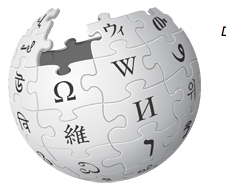 |
|---|
It's not the data, it's how you use it. Your options are to either embrace Wikipedia and harness its badassness, or to hate it and stay not badass.
The dumbasses: Teachers who ban Wikipedia. They should be more creative and design assignments that harness the power of Wikipedia.
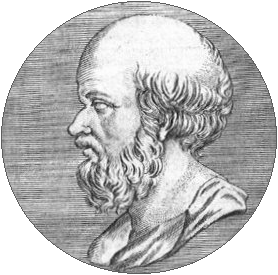 |
.jpeg) |
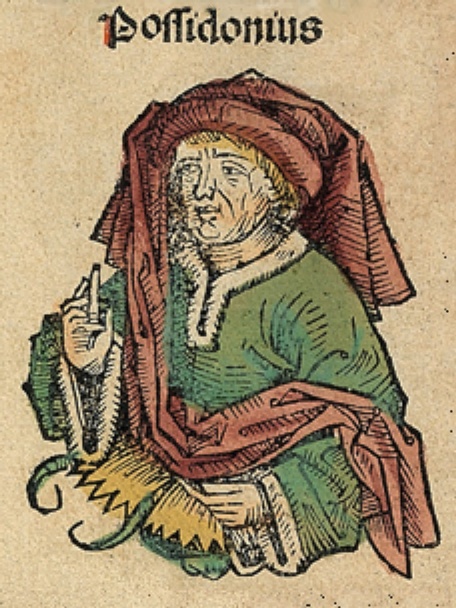 |
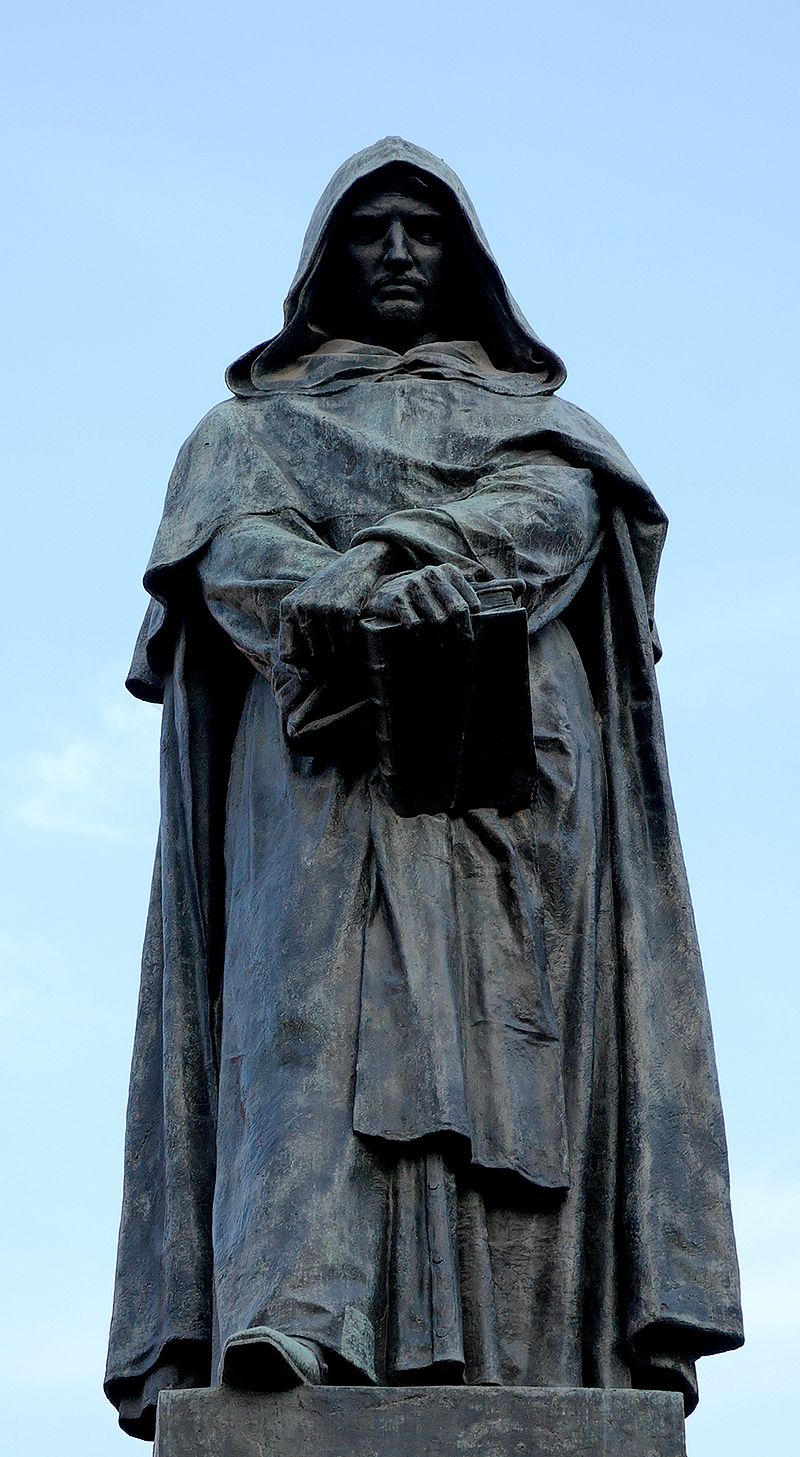 |
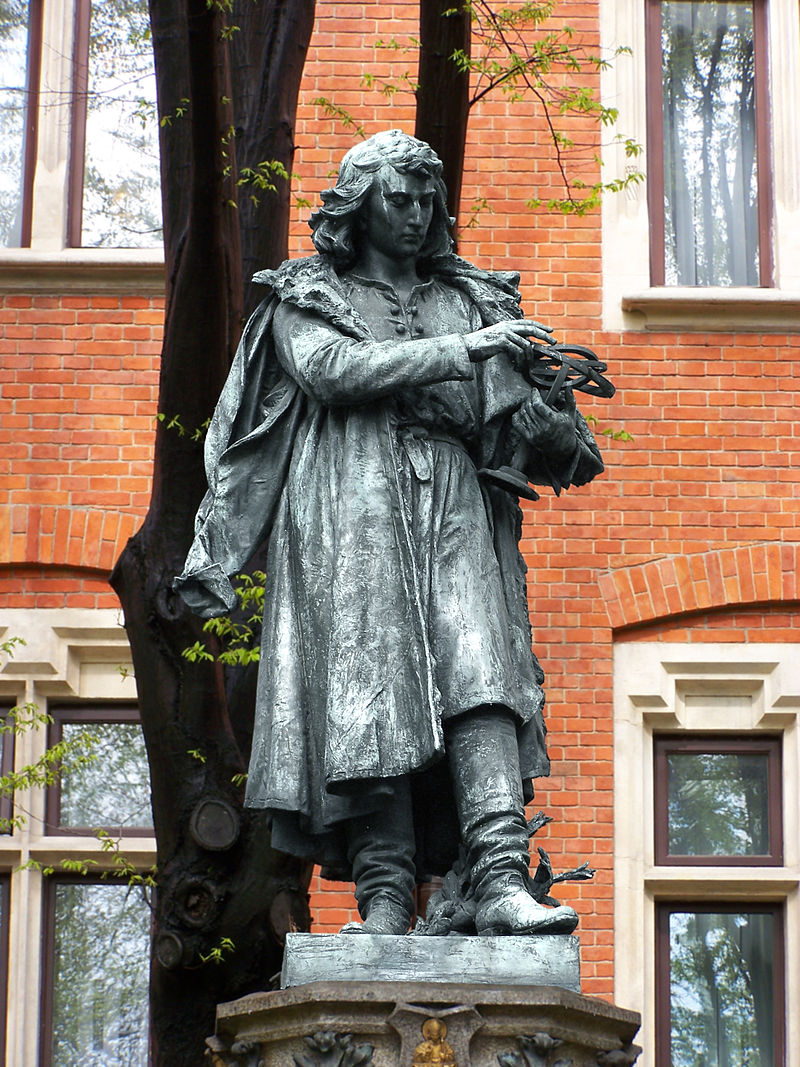 |
|---|---|---|---|---|
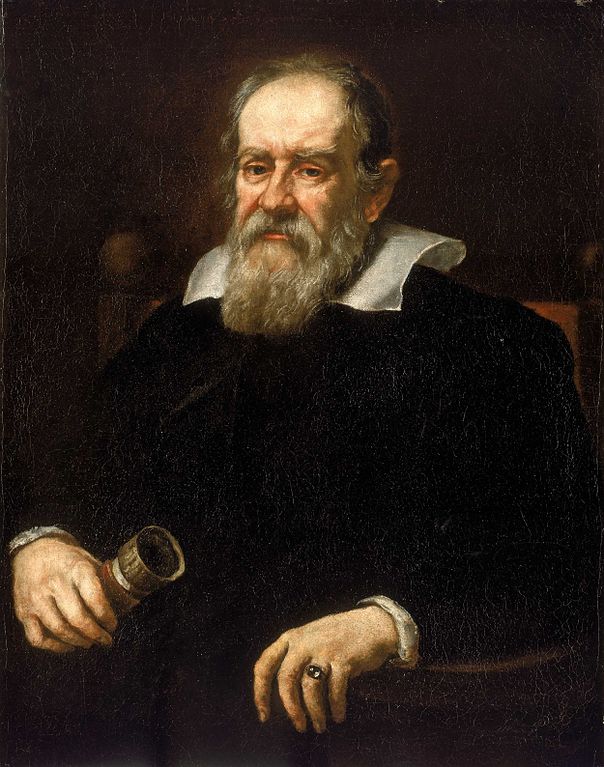 |
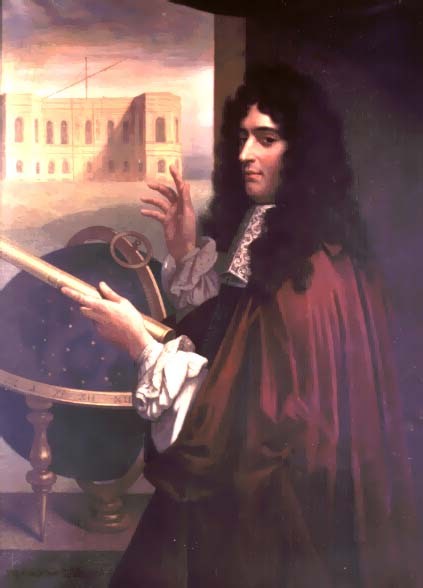 |
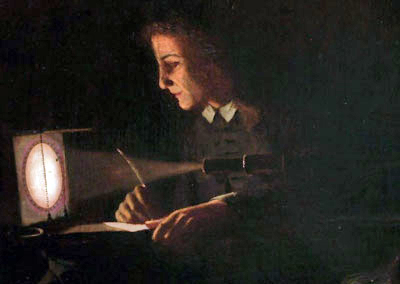 |
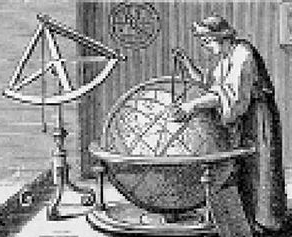 |
|---|---|---|---|
Long before Bruno, Copernicus, and Galileo were raising hell with the Catholic Church, and long before the age of telescopes, Eratosthenes, Aristarchus, and Posidonius had worked out the size and distance to the sun. They found it to be substantially larger than the Earth, which was a solid clue for heliocentrism.
Measurements of the distance to the sun:
Year Distance Method
(AU)
Aristarchus ~ -300 >.02 Moon phases
Hipparchus ~ -200 >.02 Moon phases
Posidonius ~ -100 .43 Moon phases
Horrocks 1639 .60 Transit of Venus
Cassini & Richter 1672 .925 Mars parallax
Newcomb 1895 .9994 Stellar aberration and the speed of light
The telescope was invented in Lippershey in 1608 and further developed by Galileo in
1609.
Horrocks was the first person to demonstrate that the Moon moved around the Earth in an elliptical orbit, and he was the only person to predict the transit of Venus of 1639, an event which he and his friend William Crabtree were the only two people to observe and record. This produced the first estimate for the size of Venus.
The Moon phase method and the Venus transit method are only capable of determing the Earth-sun distance to within a factor of 2, and the Venus transit method can only be used every 88 years. The Mars parallax method gives better precision and it can be done every time Mars is at solar opposition.
A 10 cm telescope has a resolution of 1 arcsecond and atmospheric turbulence prevents larger telesocpes from doing any better. Given this, the precision we can expect from the Mars parallax method is
X = Distance to Mars at solar opposition = 7.8e10 meters x = Distance from Paris to Cayenne = 7.1e6 meters (parallax baseline) A = Resolution of a telescope = 4.8e-6 radians (one arcsecond) a = Parallax angle of Mars = 9.1e-5 radians = x/X P = Parallax precision = .053 = A/aThe Mars parallax method is capable of producing a precision of 5 percent, substantially better than the Venus transit method.
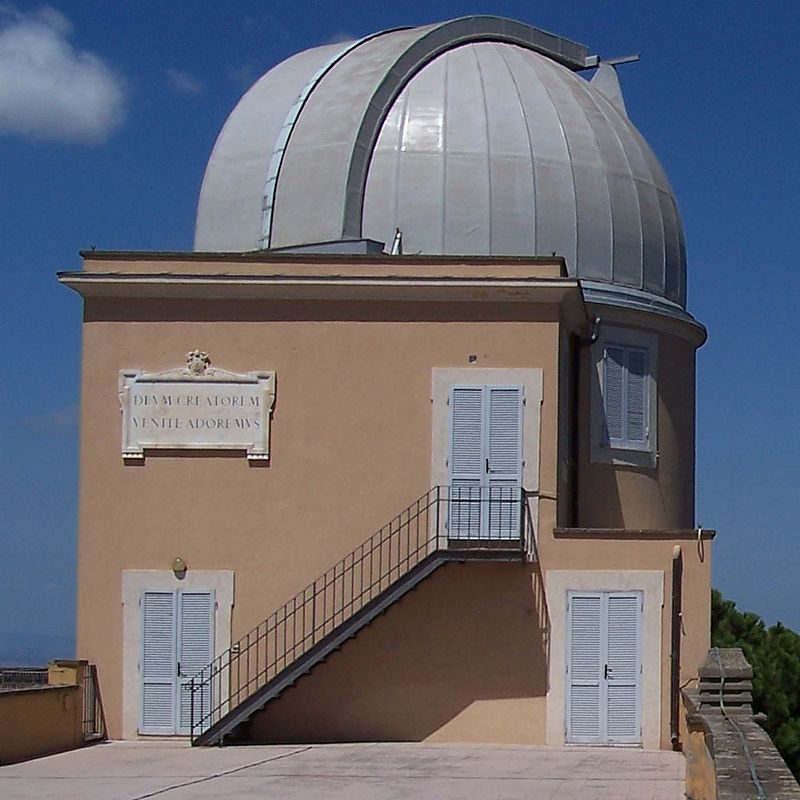 |
|---|
The Vatican has redeemed itself for the events of the 16th century and become a beacon of tolerance. In the 18th century, the Papacy actively supported astronomy, establishing the Observatory of the Roman College in 1774. By the 1930s, the smoke and sky-glow of the city had made it impossible to conduct useful observations in Rome. Pope Pius XI relocated the Observatory to Castel Gandolfo, which is 25 kilometres southeast of Rome. By 1961, the same problems with light pollution made observing difficult at Castel Gandolfo. The Observatory then established the Vatican Observatory Research Group, with offices at the Steward Observatory of the University of Arizona in Tucson, Arizona.
The Vatican Observatory (Specola Vaticana) is an astronomical research and educational institution supported by the Holy See. Originally based in the Roman College of Rome, the Observatory is now headquartered in Castel Gandolfo, Italy and operates a telescope at the Mount Graham International Observatory in the United States. The Director of the Observatory is Father Jose Gabriel Funes, an Argentinian Jesuit. In 2008, the Templeton Prize was awarded to cosmologist Fr. Michal Heller, a Vatican Observatory Adjunct Scholar. In 2010, the George Van Biesbroeck Prize was awarded to former observatory director, the American Jesuit, Fr. George Coyne.
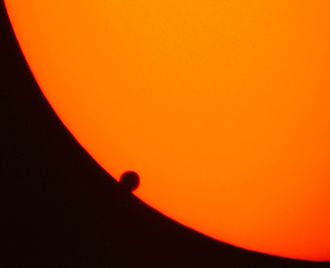 |
|---|
The dumbass: Guillaume Le Gentil, who should have known better than to invest in the Venus transit method.
He was part of the international collaborative project organized by Mikhail Lomonosov to measure the distance to the Sun, by observing the transit of Venus at different points on the earth. Edmond Halley had suggested the idea, but it required careful measurements from different places on earth, and the project was launched with more than a hundred observers dispatched to different parts of the globe, for observing the transit coming up in 1761. The French expedition turned out to be particularly unlucky, and perhaps the most unfortunate was Guillaume Le Gentil, who set out for Pondicherry, a French possession in India. He set out from Paris in March 1760, and reached Isle de France (now Mauritius) in July. However, war had broken out between France and Britain in the meantime, hindering further passage east. He finally managed to gain passage on a frigate that was bound for India's Coromandel Coast, and he sailed in March 1761 with the intention of observing the transit from Pondicherry. Even though the transit was only a few months away, on 6 June, he was assured that they would make it in time. The ship was blown off-course by unfavorable winds and spent five weeks at sea. By the time it finally got close to Pondicherry, the captain learned that the British had occupied the city, so the frigate was obliged to return to Isle de France. When 6 June came the sky was clear, but the ship was still at sea, and he could not take astronomical observations with the vessel rolling about. After having come this far, he thought he might as well await the next transit of Venus, which would come in another eight years (they are relatively infrequent, occurring in pairs 8 years apart, but each such pair is separated from the previous and next pairs by more than a century.
After spending some time mapping the eastern coast of Madagascar, he decided to record the 1769 transit from Manila in the Philippines. Encountering hostility from the Spanish authorities there, he headed back to Pondicherry, which had been restored to France by peace treaty in 1763, where he arrived in March 1768. He built a small observatory and waited patiently. At last, the day in question (4 June 1769) arrived, but although the mornings in the preceding month had all been lovely, on this day the sky became overcast, and Le Gentil saw nothing. The misfortune drove him to the brink of insanity, but at last he recovered enough strength to return to France. The return trip was first delayed by dysentery, and further when his ship was caught in a storm and dropped him off at Ile Bourbon (Reunion), where he had to wait until a Spanish ship took him home. He finally arrived in Paris in October 1771, having been away for eleven years, only to find that he had been declared legally dead and been replaced in the Royal Academy of Sciences. His wife had remarried, and all his relatives had "enthusiastically plundered his estate". Lengthy litigation and the intervention of the king were ultimately required before things were normalized. He got back his seat in the academy, remarried, and lived apparently happily for another 21 years.
One of his interesting findings was that the duration of the lunar eclipse of 30 August 1765 was predicted by a Tamil astronomer, based on the computation of the size and extent of the earth-shadow (going back to Aryabhata, 5th century), and was found short by 41 seconds, whereas the charts of Tobias Mayer were long by 68 seconds.
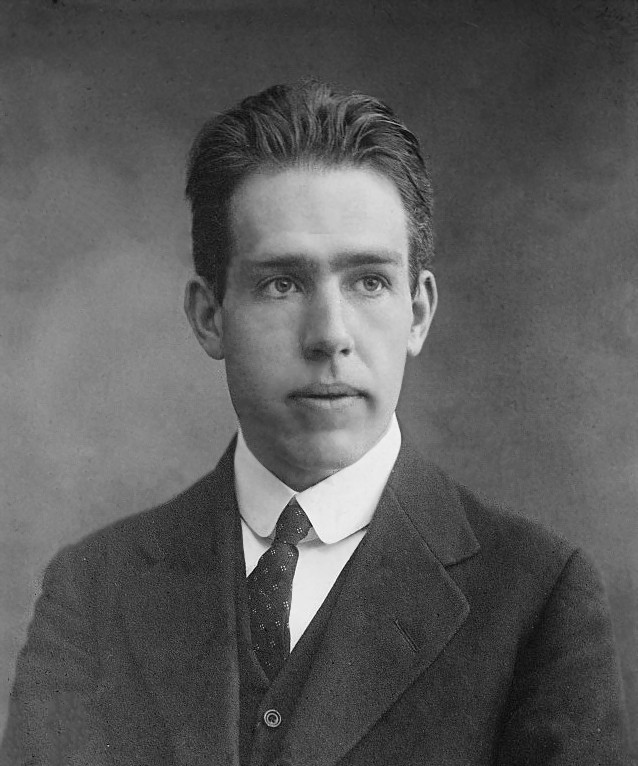 |
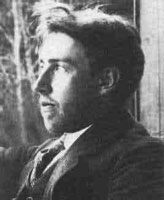 |
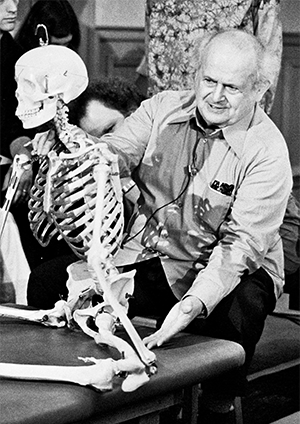 |
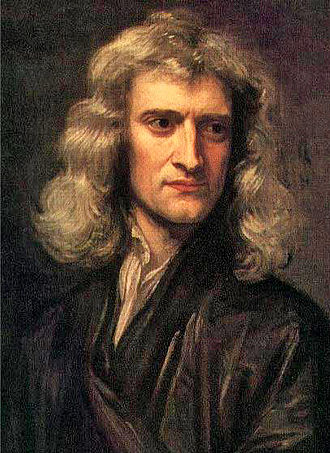 |
|---|---|---|---|
Niels Bohr and Harald Bohr played for the Copenhagen-based Akademisk Boldklub (Academic Football Club). Harald Bohr played for Danish national football team for the 1908 Summer Olympics, where he won a silver medal. Harald Bohr's popularity as a footballer was such that when he defended his doctoral thesis the audience was reported as having more football fans than mathematicians.
Moshe Feldenkrais was master of Judo, having trained with Jigoro Kano, the inventor of Judo. Feldenkrais founded "The Feldenkrais Method", a popular system for athletic and musical training.
Sir Isaac Newton discovered the curveball and used it to kick ass in tennis. He was also the original Sherlock Holmes. During his tenure as Master of the Mint he vanquished the coin counterfeiters.
Ernest Rutherford played rugby for Nelson College and the University of Canterbury.
Edwin Hubble played for the Chicago Maroons basketball team, which won the national championship in 1909.
Nikola Tesla had the powers of a Shaolin monk.
David Schramm was the national heavyweight wrestling champion.
Neil Tyson wrestled for Harvard.
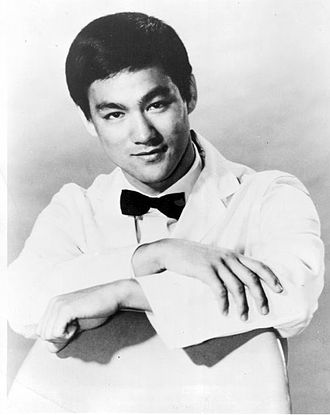 |
|---|
Bruce's striking speed from a distance of 3 feet was .05 seconds.
Bruce could throw grains of rice up into the air and then catch them in mid-flight using chopsticks.
Bruce did press ups using only 2 fingers.
Developed the one inch punch.
Danny Inosanto: "Bruce had tremendous strength in holding a weight out horizontally in a standing position. I know because I've seen it. He'd take a 125lb barbell and hold it straight out."
In this document, U. Chicago courageously takes a stand for academic freedom. Many colleges have been less than courageous.
FIRE has overturned a large number of prohibitions on free speech at universities.
 |
|---|
Baseball Hall of Fame balloting for 2015.
Votes % Year of Selected to Steroid
eligibility The Hall users
Randy Johnson 534 97 1 *
Pedro Martinez 500 91 1 *
John Smoltz 545 83 1 *
Craig Biggio 544 83 3 *
Mike Piazza 384 70 3
Jeff Bagwell 306 56 5
Tim Raines 302 55 8
Curt Schilling 215 39 3
Roger Clemens 206 38 3 *
Barry Bonds 202 37 3 *
Lee Smith 166 30 13
Edgar Martinez 148 27 6
Alan Trammell 138 25 14
Mike Mussina 135 25 2
Jeff Kent 77 14 2
Fred McGriff 71 13 6
Larry Walker 65 12 5
Gary Sheffield 64 12 1
Mark McGwire 55 10 9 *
Don Mattingly 50 9 15
Sammy Sosa 36 7 3 *
The Badass: Babe Ruth, who could pitch and hit, and the only substances he abused
were food and drink.
The dumbasses: Steroid users such as Clemens, Bonds, McGwire, Sosa and Rodriguez. These dumbasses are not going to The Hall.
Lance Armstrong had been the subject of doping allegations ever since winning the 1999 Tour de France. In 2012, a United States Anti-Doping Agency investigation concluded that Armstrong had used performance-enhancing drugs over the course of his career and named him as the ringleader of "the most sophisticated, professionalized and successful doping programethat sport has ever seen." As a result, he received a lifetime ban from competing in all sports which follow the World Anti-Doping Agency code - effectively ending his athletic career. He was also stripped of all of his achievements after 1998, including his seven Tour de France titles.
In the 1970's Shaw Brothers Studio began mass-producing kung fu films, bringing kung fu to the west for the first time. Since then they licensed their films to Celeste Pictures, which means that kung fu fans will see these films in their digitally restored versions, many of which will be premiering for the first time on U.S. television in high definition. The licensed collection includes more than 60 of the greatest martial arts masterpieces, movies which launched the careers of stars like Jet Li, Ti Lung, David Chiang, Alexander Fu Sheng, Gordon Liu and Jimmy Wang Yu.
Thanks to the benevolence of Shaw Brothers Studio, fans are able to make their own dubs and post them on Youtube, and so now all of the priceless lore from historical kung fu films is easily accessible.
The dumbasses: The UFC and Dana White
UFC contracts are medieval and they place creativity-killing restrictions on what can be posted to Youtube. The lore of UFC fights languishes.
In 2013, Ben Askren, the Bellator champion, signed with One-FC after being rejected by the UFC, thus reducing the UFC to the level of figure skating.
Peter Woit writes a blog titled "Not Even Wrong", which is a great source of news in particle physics.
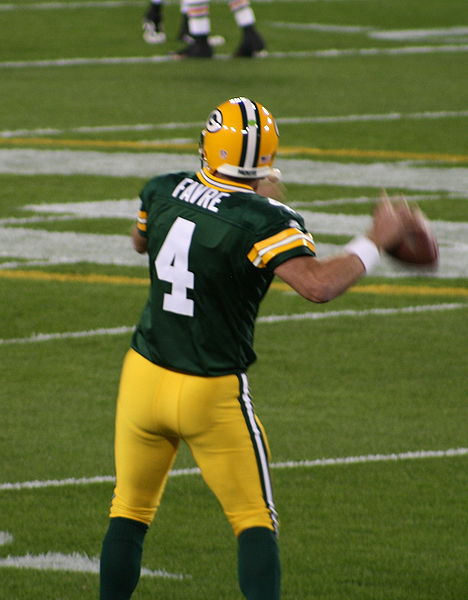 |
|---|
Favre won the NFL MVP award in 1995, 1996, and 1997, and won the super bowl in the 1996 season.
NFL records held by Favre:
Most pass touchdowns (508)
Most pass yards (71,838)
Most pass completions (6,300)
Most pass attempts (10,169)
Most pass interceptions (336)
Most starts (298)
Most wins (186)
If you want to win games you have to take risks.
Wikipedia: A notable game in the 2004 season in which Favre and the Packers finished 10-6 was against the New York Giants. During the game, Favre suffered a concussion. He did not receive medical clearance to re-enter the game. Despite the concussion, Favre threw a 28-yard touchdown to Javon Walker on a fourth down play. Afterwards it was reported that Favre did not remember throwing the touchdown pass.
.jpg) |
|---|
Sir Richard Timothy "Tim" Hunt FRS, FMedSci (born 19 February 1943) is a British biochemist. He was awarded the 2001 Nobel Prize in Physiology or Medicine with Paul Nurse and Leland H. Hartwell for their discoveries of protein molecules that control the division (duplication) of cells.
The dumbasses: The Twitter witchunt mob, the Royal Society, the London School of Economics, Nature Magazine, and the European Research Council, for buying into the witchhunt before checking the facts.
On 9 June 2015, Hunt gave a speech at the 2015 World Conference of Science Journalists in Seoul, delivered at a lunch for female journalists and scientists, entitled "Creative Science-Only a Game?", in which he said:
It's strange that such a chauvinist mnster like me has been asked to speak to women scientists. Let me tell you about my trouble with girls. Three things happen when they are in the lab: you fall in love with them, they fall in love with you, and when you criticise them they cry. Perhaps we should make separate labs for boys and girls? Now, seriously, I'm impressed by the economic development of Korea. And women scientists played, without doubt an important role in it. Science needs women, and you should do science, despite all the obstacles, and despite monsters like me.
Members of the audience tweeted parts of this speech without context, which quickly became the subject of what The Observer described as a "particularly vicious social media campaign". That same day the Royal Society formally distanced itself from Hunt's comments and emphasised its commitment to equality in the sciences.
The Observer later explained that Hunt felt he had made it clear he was joking because he had included the phrase "now seriously" in his statement, which was not mentioned in the early reports. A leaked transcript published in The Times, provided by an unnamed EU official, corroborated the inclusion of these words in his statement. The Times on 18 July reported that a recording of the end of the toast was found that showed it "was received with appreciative laughter" and so supported the claim that the comments were a joke.
On 10 June Hunt resigned from his position as Honorary Professor with the University College London's Faculty of Life Sciences and from the Royal Society's Biological Sciences Awards Committee. He had been told by a senior [at UCL] to resign immediately or be sacked. Hunt said the European Research Council (ERC) had also forced him to resign. Several female scientists and commentators defended Hunt. Dame Athene Donald, a professor of Physics and fellow of the Royal Society, said Hunt "was always immensely supportive of the ERC's work around gender equality".
On 15 June the London Evening Standard reported that the decision to ask Tim Hunt to resign from his honorary position at UCL was taken without consultation with the Council, the university's governing body. The UCL President, Professor Michael Arthur released a statement, reported on the BBC on 26 June, stating that there would be no reinstatement of Hunt as it would send "entirely the wrong signal". The University's Council later confirmed this decision.
On 30 June, The Guardian reported that broadcaster Jonathan Dimbleby had resigned from an honorary fellowship at UCL in protest at its treatment of Hunt. Also, author and journalist Jeremy Hornsby wrote University College London out of his will in protest, leaving it "about L100,000 worse off"
Physicist and broadcaster Brian Cox, speaking on BBC Radio 4's The World at One, referred to Hunt's comments as "very ill-advised", but criticised what he saw as the hounding out of Hunt as a disproportionate response to concerns over his comments, and part of a "wider problem of trial by social media". In a letter to The Times a group of 29 staff scientists, students and postdoctoral fellows, both male and female, who had worked with Tim Hunt, wrote in support of his character. They described how his help had been "instrumental in the advancement of many other women and men in science beyond those in his own lab" and how he had "actively encouraged an interest in science in schoolchildren and young scientists, arranging for work experience and summer students of both genders to get their first taste of research in his lab." They urged the ERC and UCL to "reconsider their rush to judgment".
At least eight Nobel prizewinning scientists and 21 honorary fellows had criticised the treatment of Hunt following his resignation. Boris Johnson, the mayor of London, and Richard Dawkins also expressed their indignation at the treatment of Hunt. Sir Paul Nurse, head of the Royal Society who shared the 2001 Nobel prize in medicine with Hunt, condemned his comments saying they had "damaged science", while saying later that the response to Hunt's comments was "completely out of proportion" and he should not have been forced to resign.
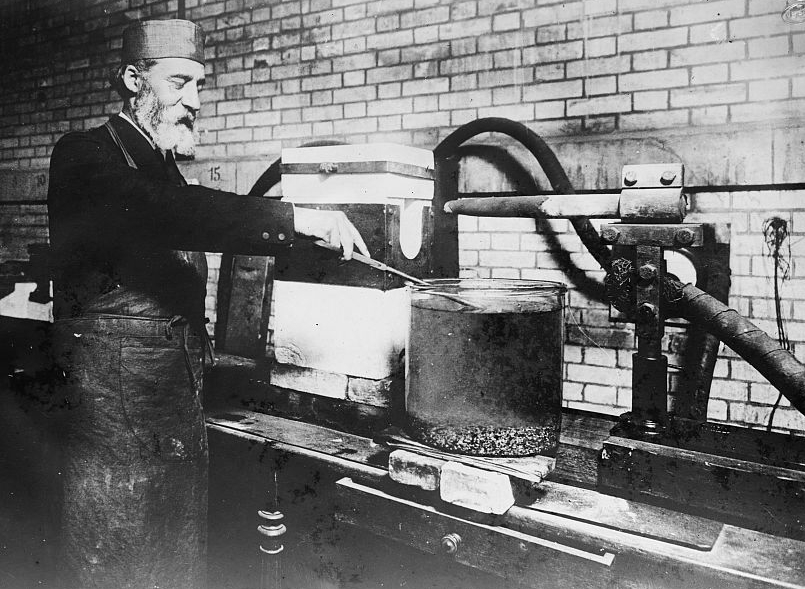 |
|---|
In the 19th century the existence of the element fluorine was known but all attempts to isolate it had failed, and some experimenters had died in the attempt. Initial studies on fluorine were so dangerous that several experimenters were deemed "fluorine martyrs" after misfortunes with hydrofluoric acid. Isolation of elemental fluorine was hindered by the extreme corrosiveness of both it and hydrogen fluoride, as well as the lack of a simple and suitable electrolyte.
Henri Moissan, after much trial and error, found that a mixture of potassium bifluoride and dry hydrogen fluoride was a conductor, enabling electrolysis of fluorine. To prevent rapid corrosion of the platinum in his electrochemical cells, he cooled the reaction to extremely low temperature and forged cells from a more resistant mixture of platinum and iridium, and used fluorite stoppers. In 1886, after 74 years of effort by many chemists, Moissan isolated elemental fluorine.
In 1906, Moissan received the Nobel Prize in Chemistry, with the following citation: "In recognition of the great services rendered by him in his investigation and isolation of the element fluorine ... The whole world has admired the great experimental skill with which you have studied that savage beast among the elements."
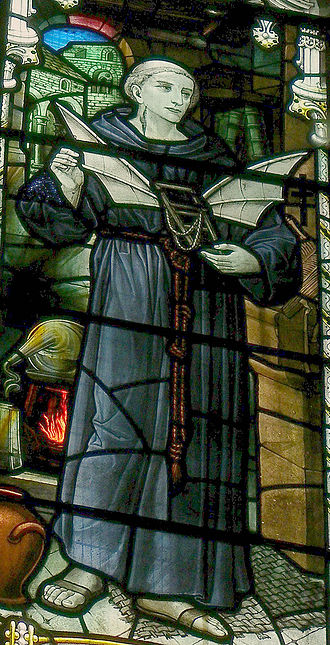 |
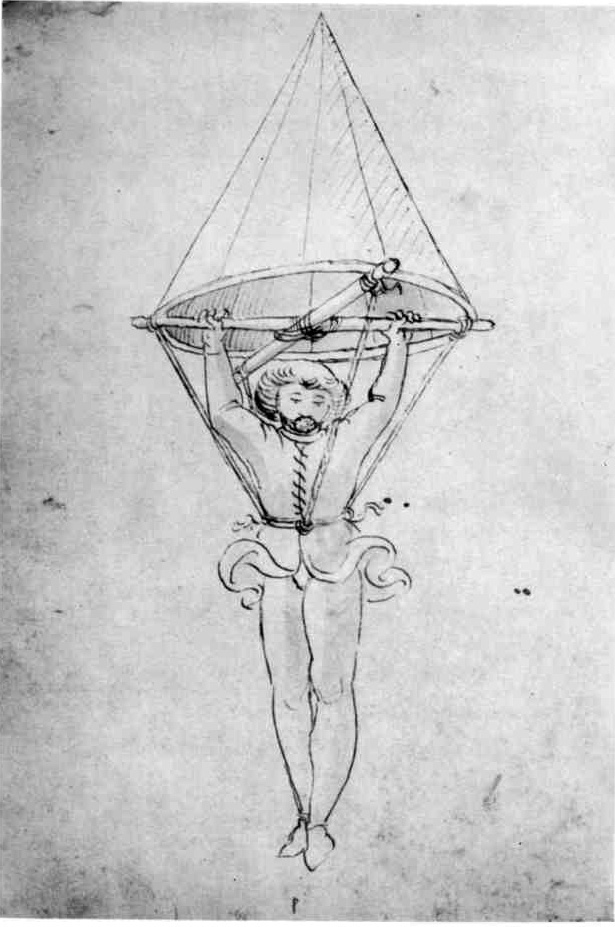 |
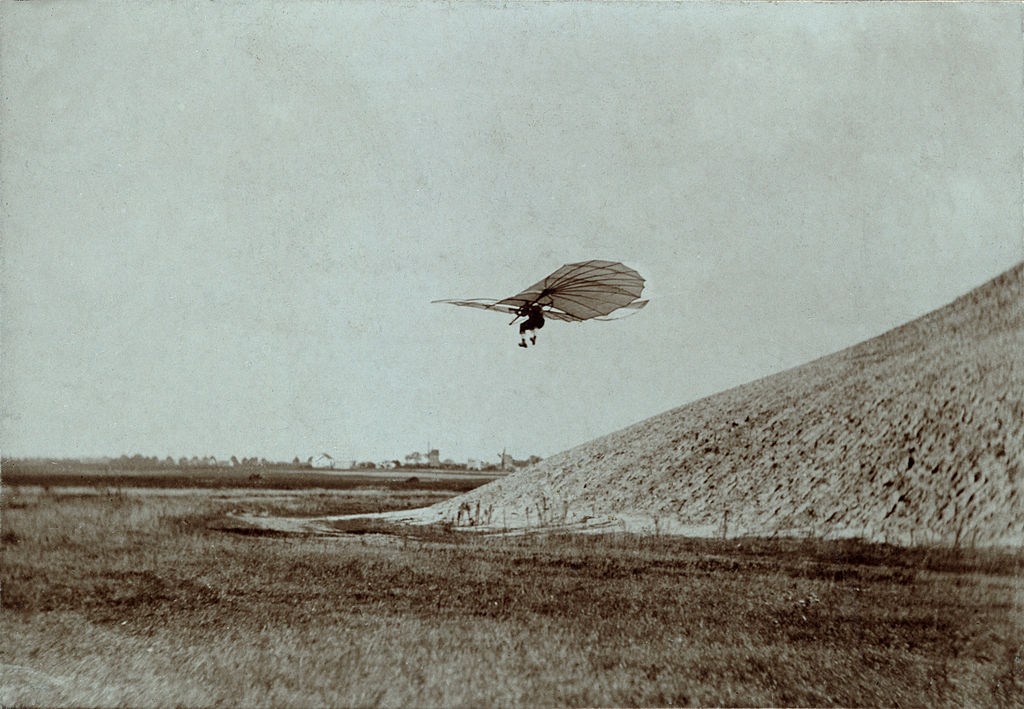 |
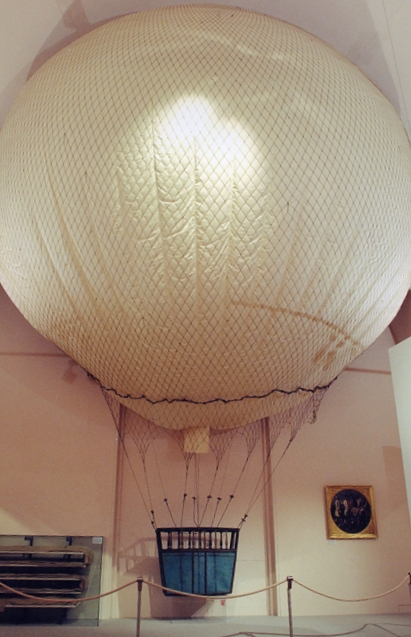 |
|---|---|---|---|
559 Several prisoners of Emperor Wenxuan, including Yuan Huangtou,
were forced to launch themselves from a tower attached to a kite,
as an experiment. Yuan Huangtou was the sole survivor, successfully gliding
over the city walls.
852 Firman builds a set of wings with vulture feathers and jumps from a tower
in Cordoba, Spain, and survives.
1005 Eilmer, an English Benedictine monk, built a glider and
jumped from the tower of the Malmesbury Abbey. He glided for
15 seconds and 200 meters before landing, and survived.
He was the first to note the importance of a tail for stability, his
glider not having had a tail. The height of the tower is not known
but was in the range of 100 meters. The date is approximate.
1475 Oldest depiction of a parachute. Date approximate and author unknown.
1485 da Vinci sketches a parachute.
da Vinci studied bird flight, analyzing it and anticipating many
principles of aerodynamics, although his work remained unknown until 1797,
and so had no influence on developments over the next three hundred years.
He understood that "An object offers as much resistance to the air as the
air does to the object." Newton would not publish the Third law of
motion until 1687.
From the last years of the 15th century on he wrote about and sketched
many designs for flying machines and mechanisms, including ornithopters,
fixed-wing gliders, rotorcraft and parachutes. His early designs were
man-powered types including ornithopters and rotorcraft, however he came
to realise the impracticality of this and later turned to controlled
gliding flight, also sketching some designs powered by a spring.
1617 Vrancic builds a parachute based on da Vinci's design plus his own
improvements, jumps from St. Martin's Cathedral, and survives.
1631 Celebi jumps with a glider from the Galata tower, a height of 52 meters,
and glides over the Bosphorus strait.
1783 Josef and Etienne Montgolfier achieve the first manned flight with a
hydrogen balloon.
1852 Giffard builds the first powered balloon, powered by a steam engine.
1853 Cayley builds the first modern glider. He also advanced the theory of
flight, including developing curved wing surfaces and building a
whirling arm rig to test wings
1858 Wenham finds that long wings are more efficient than short wings.
1871 Wenham and Browning build the first wind tunnel
1898 Dumont builds the first balloon powered by an internal combustion engine.
1903 The Wright brothers build the first powered fixed-wing aircraft.
They also invented the wind tunnel and advanced the art of wings and
propellers.
1913 Nesterov performs the first loop with a fixed-wing aircraft
1913 First dogfight. Lamb and Rader fired pistol shots at each other while airborne,
during the Siege of Naco, Mexico.
1914 First aircraft shot down. A French Voisin III, piloted by Frantz and Quenault,
engaged a German Aviatik B.II October 5, 1914. After expending all of his
machine-gun ammunition, Quenault shot the German pilot (Schlichting) with his
rifle, causing the Aviatik to crash.
1931 Piccard and Kipfer set an altitude record of 15.6 km with a hydrogen balloon
1939 First liquid-fueled rocket-powered aircraft
1939 First turbojet-powered aircraft
1947 Yaeger breaks the sound barrier in a Bell X-1
Power Mass Max speed
(kW) (kg) (m/s)
Gifford balloon 2 3 300 m^3 of hydrogen. 44 meters long
Wright Flyer 9 274 14 Engine = 77.3 kg. Length=6.43 m. Wingspan = 12.31 m.
What do you call a fast man that can't catch? A cornerback What do you call a fast man that can't tackle? A wide receiver What do you call a fast man that can't tackle or catch? A sprinter What do you call a fast man that can tackle and catch? A rugby player What do you call a slow man man that can't tackle or catch, but is badass in intangible ways? A rugby playerRaymond Berry was a slow man who dominated at receiver by out-thinking his foes, and his connection with quarterback Johnny Unitas was telepathic.
During his career, he led the NFL in receptions three times, and was renowned for his great hands and precise pass patterns. In his career he only dropped a total of two passes and fumbled only twice. He was selected to the Pro Bowl six times, from 1957–61 and in 1965. He also made the all-NFL team from 1958-1960. Berry was considered the very identity of the great Baltimore Colts' teams of the 1950s and 1960s (along with Johnny Unitas, Alan Ameche, Lenny Moore, John Mackey, Gino Marchetti, Art Donovan and Jim Parker). He was famous for his attention to detail and preparation. He and quarterback John Unitas regularly worked after practice and developed the timing and knowledge of each other's abilities that made each more effective.
As coach of the Patriots in the 1985 season, the team recorded an 11–5 record, making the playoffs as a wildcard team. They went on to become the second team in NFL history ever to advance to the Super Bowl by winning three playoff games on the road, defeating the New York Jets, 26–14, the Los Angeles Raiders, 27–20, and the Miami Dolphins, 31–14.
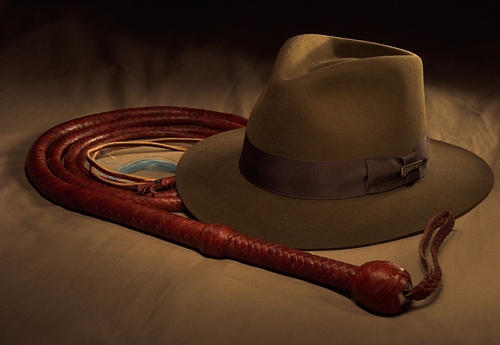 |
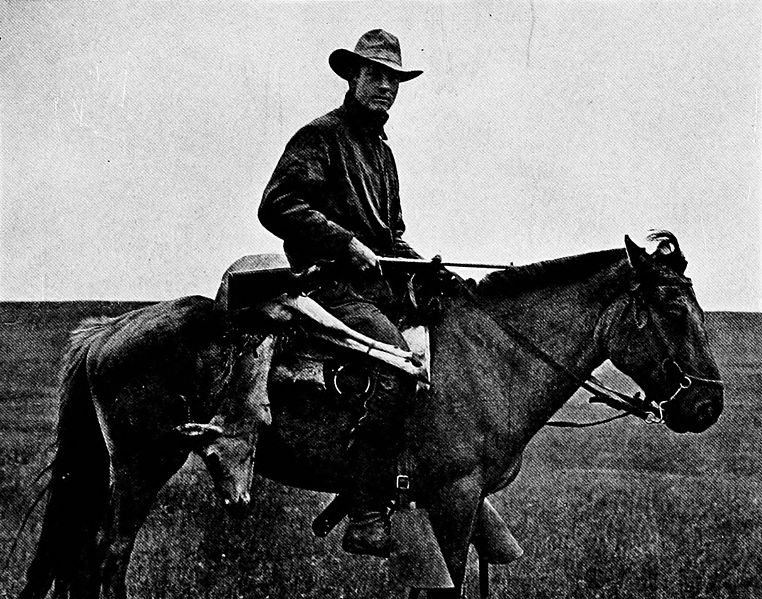 |
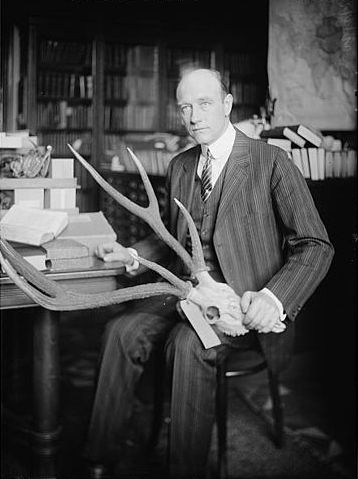 |
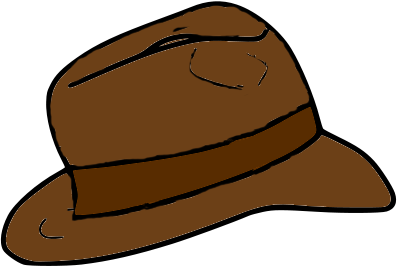 |
|---|---|---|---|
Roy Chapman Andrews (1884-1960) explored Mongolia for archaeological artifacts while fighing off snakes, bandits, sandstorms, and hostile governments, and is allegedly the real person that the movie character of Indiana Jones was patterned after. He created the metaphor of 'Outer Mongolia' as denoting any exceedingly remote place.
Andrews was born in Beloit, Wisconsin. As a child, he explored forests, fields, and waters nearby, developing marksmanship skills. He taught himself taxidermy and used funds from this hobby to pay tuition to Beloit College. After graduating, Andrews applied for work at the American Museum of Natural History in New York City. He so much wanted to work there that after being told that there were no openings at his level, Andrews took a job as a janitor sweeping floors, declaring that "these are *museum* floors!" He began collecting specimens for the museum and during the next few years, he worked and studied simultaneously, earning a Master of Arts degree in mammalogy from Columbia University.
In the 1920s, he went to Mongolia, hoping to find out something about the origins of the human race. He didn't find out anything about early humans, but he discovered a treasure trove of dinosaur bones. During four expeditions in the Gobi Desert between 1922 and 1925, he discovered Protoceratops, a nest of Protoceratops eggs, Pinacosaurus, Saurornithoides, Oviraptor and Velociraptor, none of which were known before.
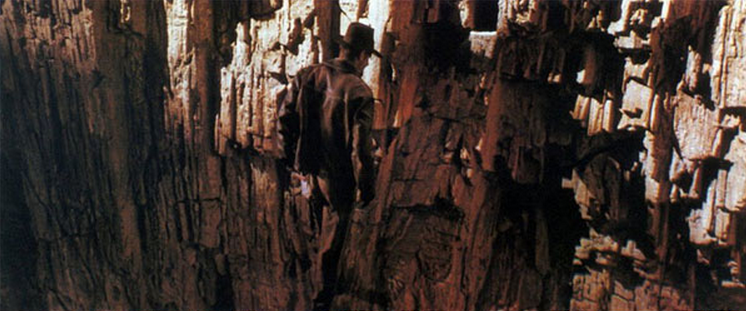 |
|||
|---|---|---|---|
The dumbasses: Cope and Marsh, for waging the "Bone Wars".
Each of the two paoentologists used underhanded methods to try to out-compete the other in the field, resorting to bribery, theft, and the destruction of bones. Each scientist also attacked the other in scientific publications, seeking to ruin his credibility and have his funding cut off.
Their search for fossils led them west to rich bone beds in Colorado, Nebraska, and Wyoming. From 1877 to 1892, both paleontologists used their wealth and influence to finance their own expeditions and to procure services and dinosaur bones from fossil hunters. By the end of the Bone Wars, both men had exhausted their funds in the pursuit of paleontological supremacy.
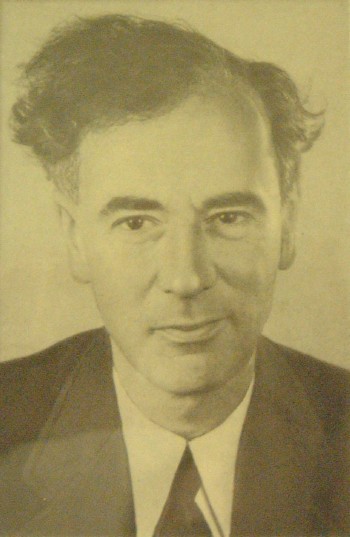 |
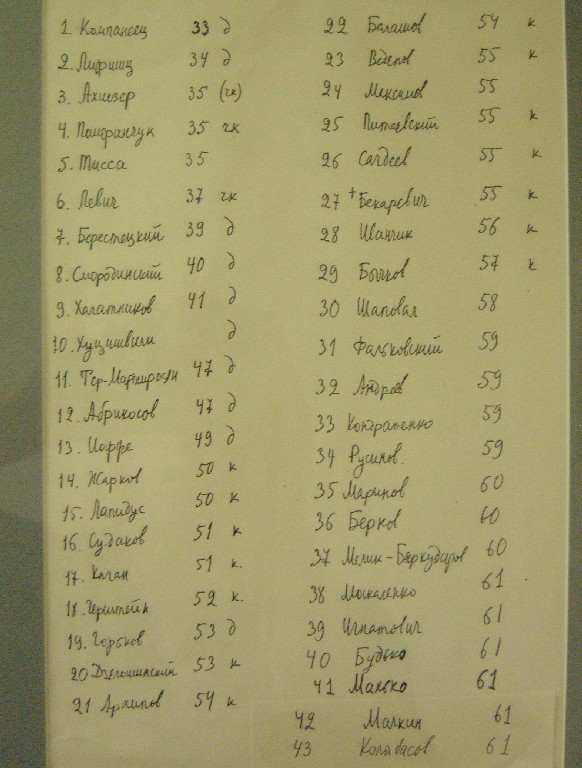 |
|---|---|
Landau developed a comprehensive physics exam called the "Theoretical Minimum" which students were expected to pass before admission to the school. The exam covered all aspects of theoretical physics, and between 1934 and 1961 only 43 candidates passed. Passing brought instant prestige and most of those who passed went on to become renowned physicists.
Landau was the principal founder of a great tradition of theoretical physics in Kharkiv, Soviet Union, sometimes referred to as the "Landau school". In Kharkiv, he and his friend and former student, Evgeny Lifshitz, began writing the Course of Theoretical Physics, ten volumes that together span the whole of the subject and are still widely used as graduate-level physics texts.
Students who passed the Theoretical Minimum:
Kompaneets, Lifshitz, Akhiezer, Pomeranchuk, Tissa, Levich, Berestetskii,
Smorodinskii, Khalatnikov, Khutsishvili, Ter-Martirosyan, Abrikosov, Ioffe,
Zharkov, Lapidus, Sudakov, Kagan, Irshtein, Gorkov, Dzyaloshinksii, Arkhipov,
Balashov, Vedepov, Maksimov, Pitaevskii, Sagdeev, Bekharevich, Ivanchik,
Bychkov, Shapoval, Falkovskii, Andronov, Kondratenko, Rusinov, Marinov, Bernov,
Malik-Barkudarov, Moskalenko, Ignatovich, Bud'ko, Man'ko, Malkin, Kolabasov,
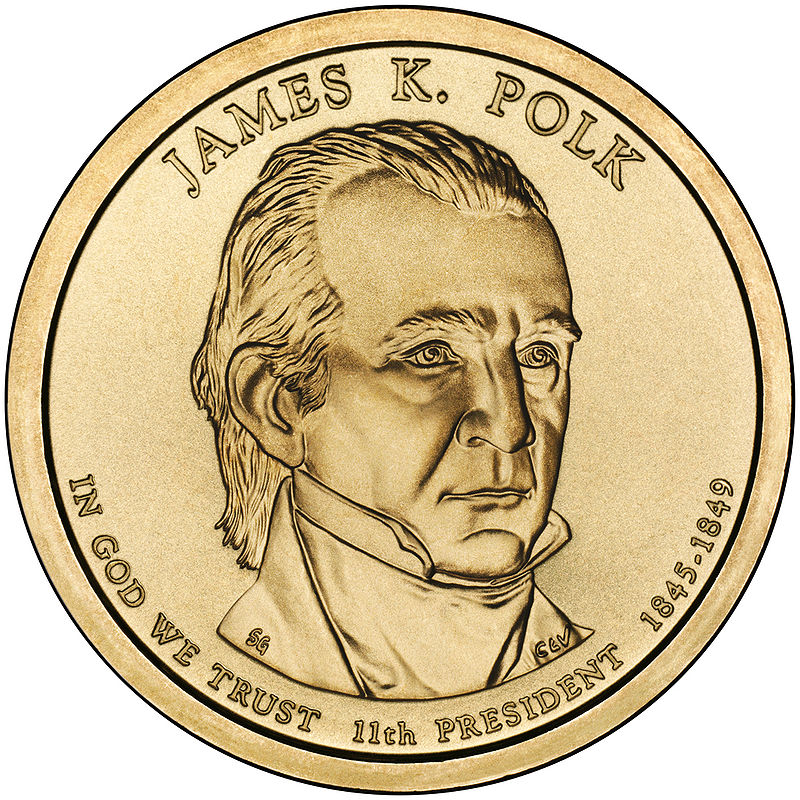 |
|---|
When running for president Polk pledged to serve exactly one term. As president he worked hard, fulfilled all his campaign promises, and didn't run for reelection. He died 3 months after the conclusion of his presidency, having worked himself to exhaustion.
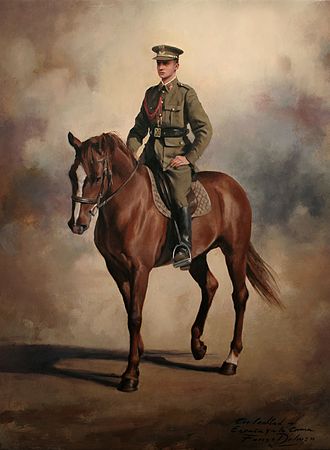 |
|---|
Juan Carlos became King of Spain in 1975, at a time when the authority of the monarch was absolute.
Soon after enthronement, Juan Carlos introduced reforms to dismantle the authoritarian regime and begin the Spanish transition to democracy. This led to the approval of the Spanish Constitution of 1978 in a referendum, which established a constitutional monarchy. In 1981, Juan Carlos played a major role in preventing a coup that attempted to revert Spain to an absolutist government in the King's name.
During his reign, Juan Carlos served as the president of the Ibero-American States Organization, representing over 700 million people in its 24-member nations of Spain, Portugal, and their former American colonies. In 2008, he was considered the most popular leader in all Ibero-America.
 |
|---|
A DEC workstation from the 90's is more useful for computational physics than a Samsung Galaxy 6.
DEC Samsung Galaxy 6
CPU floating point ops/second 1 billion 32 billion
GPU floating point ops/second - 326 billion
RAM .5 GB 3 GB
Hard drive 8 GB 128 GB
Screen 1280x800 2560x1440
Operation system Unix Android built on linux
Multitasking Strong Weak
Year 1996 2015
More badass creations:
Dumbass creations:
HTML
Microsoft Windows
Android
Blacboard
 |
|---|
-776 Hercules establishes the Olympic games, with wrestling as a sport
-648 The sport of "Pankration" is introduced to the Olympic Games. Similar to MMA.
-536 -520 Milo of Croton dominates Olympic wrestling
-450 Gautama Buddha develops the art of meditation
464 Batuo, a monk from India, founds the Shaolin Temple
500 Bodhidharma, a Buddhist monk, teaches at the Shaolin temple
1600 Sumo emerges in Japan
~1700 Shaolin temple destroyed by the Chinese Emperor.
The monks who escaped spread Shaolin kung fu throughout China.
These monks were:
Ji Sin - Developed Tiger Crane style
Ng Mui - Developed Wing Chun
Bak Mei - Known as "Pai Mei" in kung fu films. Appears in "Kill Bill"
~1700 Fong Sai Yuk. Portrayed by Jet Li in the "Fong Sai Yuk" film series.
1847 1924 Wong Fei Hung. Master of Hung Gar style. Portrayed by Jet Li in
the "Once Upon a Time in China" film series.
1860 1938 Jigoro Kano. Developed Judo and taught it to Mitsuyo Maeda and
Moshe Feldenkrais
1868 1910 Huo Yuanjia. Portrayed by Jet Li in the film "Fearless"
1869 1955 F.M. Alexander. Developed "Alexander Technique"
1893 1972 Yip Man. Practitioner of Wing Chun. Teacher of Bruce Lee
1904 1984 Moshe Feldenkrais. Physicist and wrestler.
Developed the "Feldenkrais Method".
1912 1979 Simon Yuen
1917 Mitsuyo Maeda teaches Judo to the Gracie family.
Helio Gracie subsequently develops Brazilian Jiu-Jitsu
1922 Usui develops Reiki
1933 Jigoro Kano trains Feldenkrais in Judo
1940 1973 Bruce Lee
1940 Chuck Norris
1949 Feldenkrais trains with Alexander
1951 Masahiko Kimura vs. Helio Gracie
1952 Sammo Hung
1954 Jackie Chan
1955 Gordon Liu
1963 Jet Li
1963 Michelle Yeoh
1963 Donnie Yen
1970 Shaw Brothers Studios begins mass-producing kung fu films
1975 Bruce Lee's "Tao of Jeet Kune Do" published
1975 Yehudi Menuhin records a BBC show where he teaches kung fu fundamentals
for the violin
1975- The University of Iowa wins 23 national team wrestling championships
1993 Age of Mixed Martial Arts begins when Royce Gracie wins a tournament
consisting of fighers with diverse styles.
Legions of collegiate wrestlers transition to MMA and dominate
2000 Kazushi Sakuraba vs. Royce Gracie
2008 Michael Shulman busks New York City with kung fu violin
2009- Ben Askren dominates MMA with wrestling
2010 Brock Lesnar vs. Cain Velasquez
2012 Ronda Rousey vs. Miesha Tate
2013 Ben Askren signs with One-FC. The UFC declines in significance
2015 Daniel Cormier vs. Jon Jones
Interviewer: Other than wrestling what would you say the best base to be a
successful MMA fighter would be?
Ben Askren: Wrestling
Bruce Lee: "One should seek good balance in motion and not in stillness."
The dumbass: Bikram Choudhry
Bikram yoga consists of 23 patented positions, all stationary. This destroys your athletic instincts.
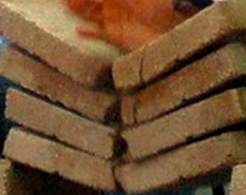 |
|---|
Pai Mei: Can you do that? Beatrix: I can, but not that close. Pai Mei: Then you cannot do it!If you can't do it while your cold, then you can't do it at all. If you train a move at high temperature then you're just learning cheats that destroy your fundamentals.
The positions of Bikram Yoga are pantented, and patents are bull. In mathematics there are no patents because they understand that this is ridiculus. In mathematics one builds on the work of others and integrates it with the rest of mathematics, giving it more powerful meaning than it had before. If Bikram Yoga's moves were useful then patenting them is evil. As it happens, the moves are junk and patenting them is a sign of weakness.
Bikram Yoga does not train the flow between positions, which is more important than the positions.
Good balance consists of being able to stabilize yourself with a low center of mass and with your hands and feet low. If your hands or feet rise up then you have lost your balance. It's easy to balance with your hands and feet up and hard to balance with them down. Bikram Yoga does not train low center of balance.
Bikram Yoga is inflexible in its timing and in its pattern of moves. Being able to break out of patterns is the soul of kung fu.
Anyone ever seen a practitioner of Bikram Yoga find success in mixed martial arts?
Old-school arcade games made the most out of the hardware, and they demanded precision to play.
 |
 |
 |
 |
|---|---|---|---|
 |
 |
 |
.png) |
|---|---|---|---|
 |
 |
 |
 |
|---|---|---|---|
 |
 |
 |
 |
|---|---|---|---|
 |
 |
 |
 |
|---|---|---|---|
 |
 |
 |
|---|---|---|
 |
 |
 |
|---|---|---|
From time to time a monster engineering challenge arises that requires the attention of a badass like Tesla. Tesla lived at beginning of the age of electromagnetism and he comprehensively solved everything, from motors to generators to the wireless transmission of power. Von Neumann lived at the beginning of the computer age and he pioneered the art of hardware and software.
Alvarez Radar, liquid hydrogen bubble chambers, nuclear reactors,
tritium production, explosive detonators, explosive lenses,
X-ray analysis of archaeological sites.
Amati Violins
Archimedes Catapults and other military technology
Armstrong Rifled guns, battleships, hydropower, hydraulics, cranes
Bach Harpsichord tuning
Broadwood Pianos
Chang Diaz Ion drives
Cray Supercomputers
da Vinci Art of mechanical engineering
Diesel Internal combustion engines
Drever Laser technology for gravity wave detectors
Eiffel Towers, bridges, aeronautics, telescope domes, metallurgy
Erard Pianos
Fermi Nuclear reactors
Fraunhofer Lenses
Gatling Machine guns
Giacconi X-ray telescopes
Goddard Rockets
Hale Telescopes
Harrison Clocks for determining longitude at sea
Heaviside Telegraph
Helmholtz Acoustics, opthalmascopes
Herschel Telescopes, metallurgy
Hooke Art of mechanical engineering
Huygens Pendulum clocks
Imhotep Art of mechanical engineering
Johnson Aircraft
Lavoisier Gunpowder
LeMay Bomber physics
Lee Theory of Shaolin kung fu
Leibniz Mechanical calculators
MacCready Gliders
Masamune Swords
Marconi Radios
Menuhin Violin technique
Miyamoto Video games
Miyazaki Animation
Moisson Isolating flourine
Monteverdi Opera
Musk Rockets and electric cars
Newton Reflecting telescopes
Onnes Liquifaction of helium
Orszag Spectral methods for computational fluid dynamics
Paixhans Explosive shells
Pythagoras Musical tuning
Stevin Windmills, dams, pumps, sailing ships, musical tuning
Stradivarius Violins
Szilard Nuclear reactors
Teller fusion bomb
Tesla Generators, motors, and the wireless transmission of power
Torvalds Linux
Ulam Fusion bomb
van der Meer Antiproton cooling for particle colliders
von Braun Rockets
von Karman Supersonic flight
von Neumann Computer architecture and algorithms
Wren Architecture
Wright brothers Aircraft
Zeiss Lenses
Windows Chrome OS The Guggenheim
Source: Wikipedia unless otherwise noted.
 |
|---|